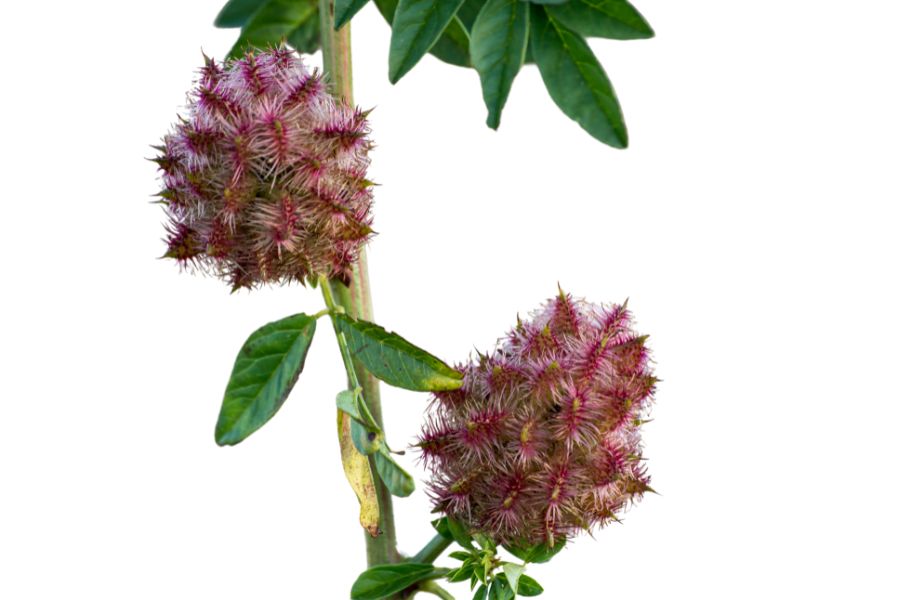North Dakota grows plenty of tasty plants in its fields, woods, and wetlands. The plains state offers wild foods that early settlers and Native Americans gathered for centuries. Foraging connects modern North Dakotans to this practical tradition.
Finding food in the wild adds fun to outdoor adventures across the state. Many edible plants grow alongside trails, near rivers, and throughout the grasslands. Each area of North Dakota offers different wild foods depending on the soil and climate.
Whether you’re in the badlands or along a wooded lake shore, the mix of edible plants is worth exploring. Knowing what to watch for can mean the difference between a handful of greens and a basket full of unique, valuable finds.
What We Cover In This Article:
- The Edible Plants Found in the State
- Toxic Plants That Look Like Edible Plants
- How to Get the Best Results Foraging
- Where to Find Forageables in the State
- Peak Foraging Seasons
- The extensive local experience and understanding of our team
- Input from multiple local foragers and foraging groups
- The accessibility of the various locations
- Safety and potential hazards when collecting
- Private and public locations
- A desire to include locations for both experienced foragers and those who are just starting out
Using these weights we think we’ve put together the best list out there for just about any forager to be successful!
A Quick Reminder
Before we get into the specifics about where and how to find these plants and mushrooms, we want to be clear that before ingesting any wild plant or mushroom, it should be identified with 100% certainty as edible by someone qualified and experienced in mushroom and plant identification, such as a professional mycologist or an expert forager. Misidentification can lead to serious illness or death.
All plants and mushrooms have the potential to cause severe adverse reactions in certain individuals, even death. If you are consuming wild foragables, it is crucial to cook them thoroughly and properly and only eat a small portion to test for personal tolerance. Some people may have allergies or sensitivities to specific mushrooms and plants, even if they are considered safe for others.
The information provided in this article is for general informational and educational purposes only. Foraging involves inherent risks.
The Edible Plants Found in the State
Wild plants found across the state can add fresh, seasonal ingredients to your meals:
Wild Bergamot (Monarda fistulosa)
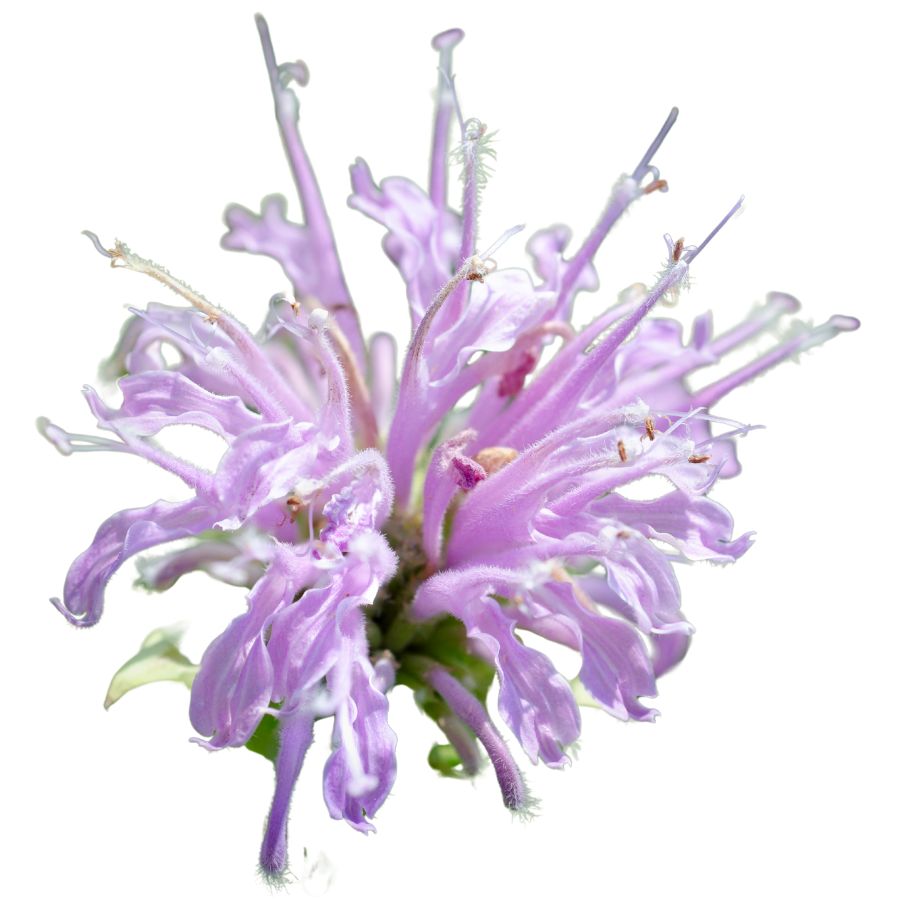
Wild bergamot has clusters of lavender-colored flowers and opposite leaves that smell like thyme when crushed. Its flavor leans herbal and minty, with a little bitterness that works well in marinades.
The flower heads are shaggy and irregular, and the plant’s square stem helps tell it apart from lookalikes like spotted horsemint.
In recipes, it’s most often dried and steeped or blended into herb mixes.
Both leaves and petals can be eaten, though most people avoid the stems. Don’t eat it in large amounts raw—it’s strong and can be overpowering.
It’s related to mint, and that shows in how fast the flavor develops when heat is applied. You’ll get the most aroma if you bruise the leaves before using them.
Chokecherry (Prunus virginiana)
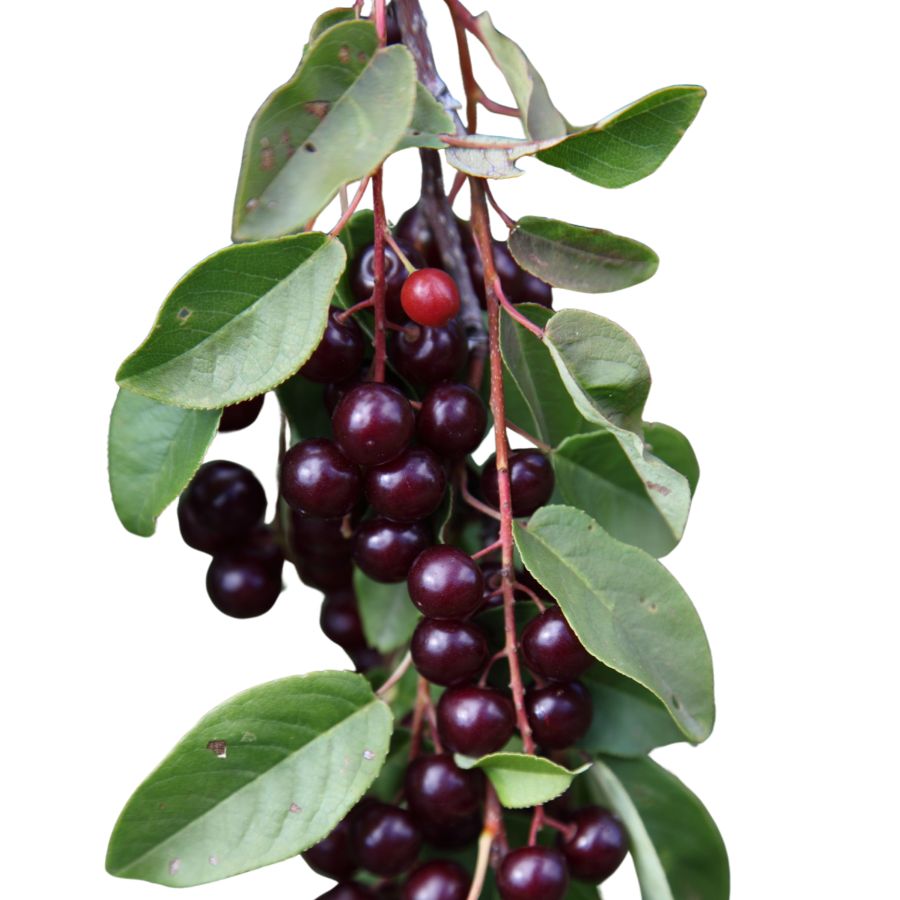
Clusters of dark berries hanging from a woody shrub usually indicate chokecherries, especially when the leaves are oval with finely toothed edges. These berries turn from red to deep purple or black when they’re ready to eat.
Chokecherries are rarely eaten raw due to their bitterness, but they shine in cooked recipes like preserves, sauces, or even homemade wine. Boiling the fruit and straining it helps separate the pulp from the inedible seeds.
It’s easy to mix up chokecherries with other wild cherries, but true chokecherries have longer, narrower leaves and a more astringent taste. Avoid anything with rounder, solitary berries or a sweet scent without the signature tartness.
Their texture is slightly gritty around the pit, and the flavor improves significantly with sugar and heat. A strong astringent quality dominates the raw berry, but the processed pulp becomes rich and deeply flavored.
Wild Mint (Mentha arvensis)

You’re probably familiar with the strong scent of wild mint, which comes from the essential oils concentrated in its leaves. It has square stems, lance-shaped leaves with slightly toothed edges, and pale lilac flower clusters.
The fresh leaves can be eaten raw, cooked into soups, or muddled into drinks for a crisp flavor. Expect a bright, menthol-like kick with a hint of sweetness.
False mint species like purple deadnettle grow in similar spots but lack the menthol smell and have fuzzy leaves. If the plant doesn’t smell like mint, it probably isn’t.
Stick to the leaves and younger stems for eating because the woody stalks aren’t palatable. Wild mint also holds up well when dried and stored for tea or seasoning.
Sunflower (Helianthus annuus)
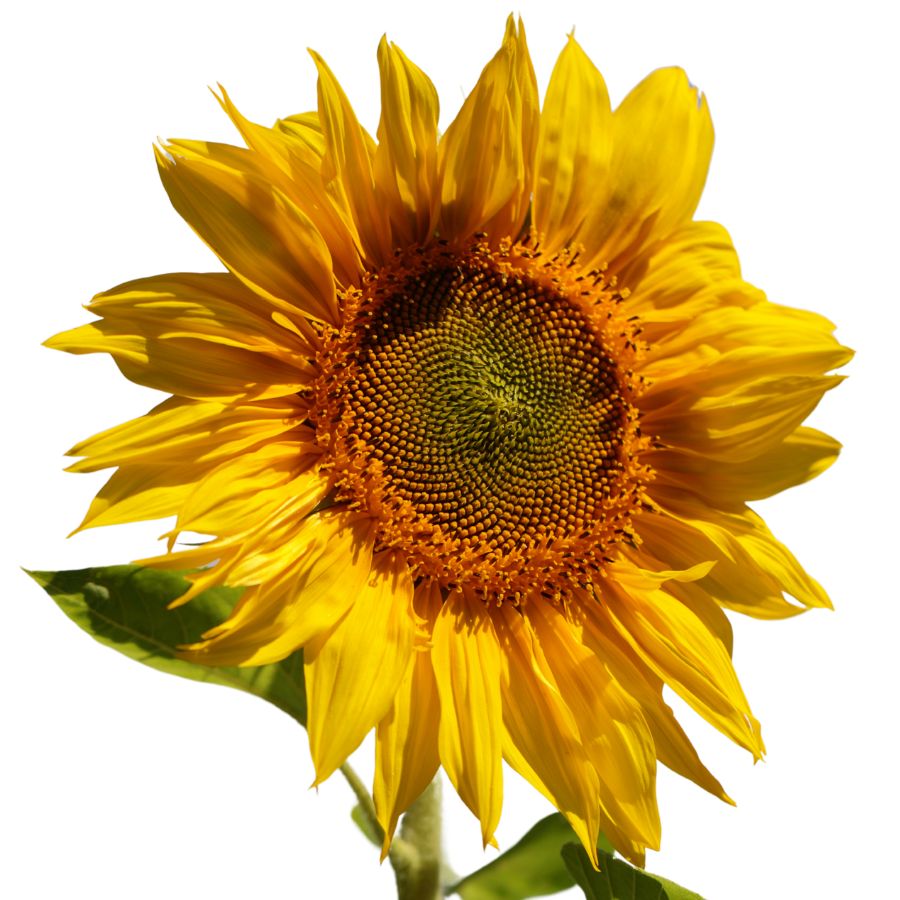
Sunflowers have a thick, rough stem and large, broad leaves with a slightly sandpapery texture. The huge circular flower head is made up of bright yellow petals surrounding a dark center packed with seeds.
The seeds inside the flower head are edible once they mature, and you can eat them raw, roasted, or ground into meal. The young flower buds are also edible and can be steamed or sautéed like an artichoke.
When gathering sunflower seeds, make sure not to confuse the plant with certain types of wild composites that have smaller flowers and thin, spindly stalks. True sunflowers always have a thick, sturdy stem and a flower head that can be as wide as a dinner plate.
Sunflower seeds have a mild, nutty flavor and a tender crunch when fresh. You can also press the seeds for oil or sprout them for a nutritious snack.
Ground Cherry (Physalis longifolia)
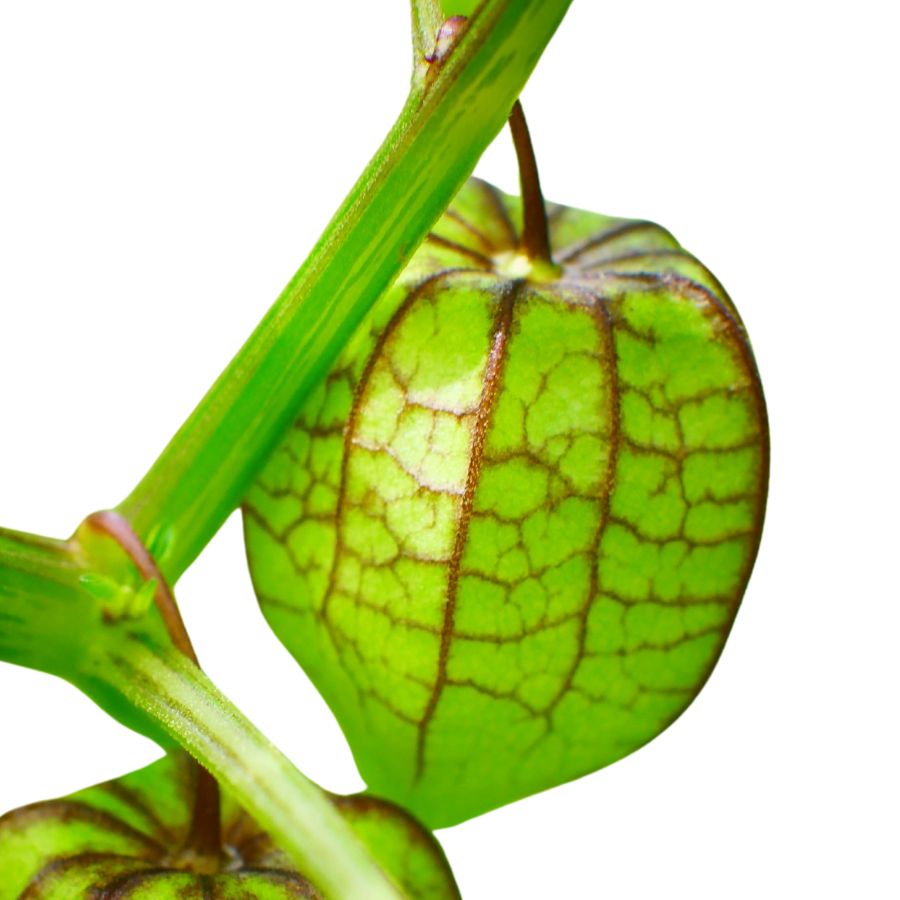
Ground cherries develop sweet golden fruits inside papery husks that resemble Chinese lanterns. These unusual plants grow low to the ground with sprawling stems and soft leaves. When fully ripe, the fruits naturally fall from the plant, ready to be gathered.
The edible berry inside tastes like a surprising mix of pineapple, vanilla, and tomato. Always remove the husk before eating, as only the fruit is safe to consume.
Look for the distinctive lantern-like husks when foraging. Ground cherries have no dangerous lookalikes, making them good for beginners. However, unripe green berries contain solanine and should be avoided.
Ground cherries can be eaten fresh, made into jams, or baked into desserts. The fruits store well for weeks if kept in their husks in a cool place. They contain vitamins A and C, making them both tasty and nutritious.
Wild Grape (Vitis riparia)
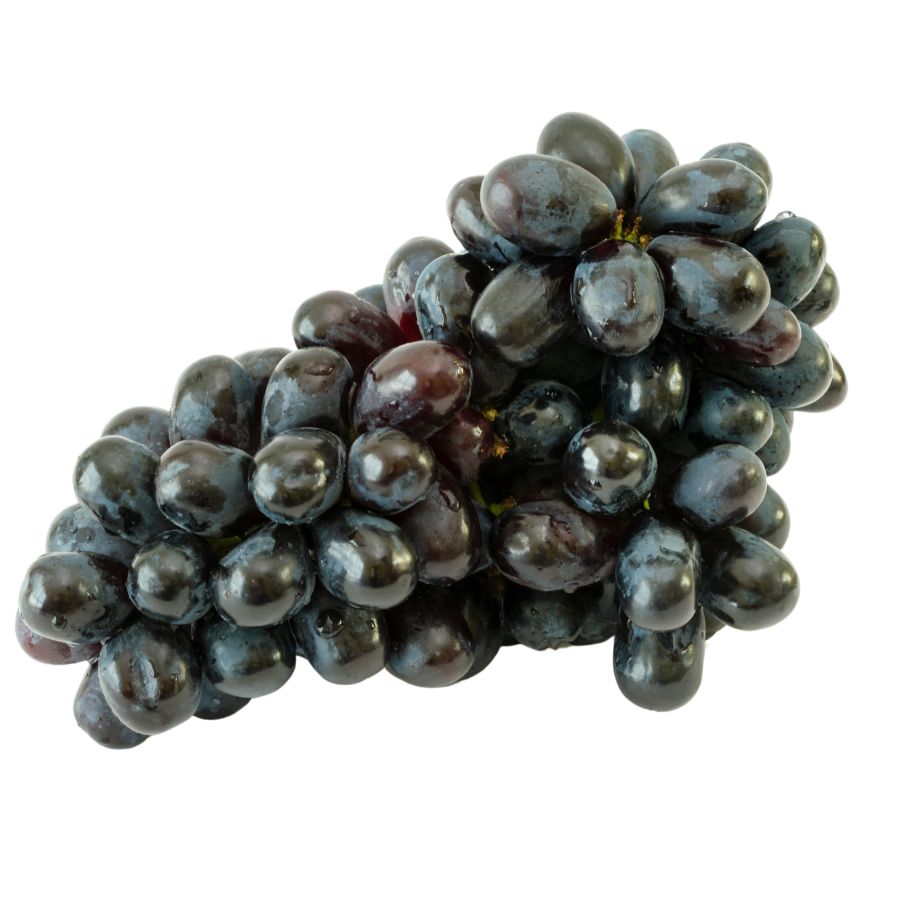
Wild grapes pack intense flavor into small purple fruits that grow in clusters on climbing woody vines. Native Americans and early settlers valued these tangy berries for thousands of years. Unlike store grapes, wild varieties offer stronger taste in much smaller packages.
When identifying wild grapes, look for heart-shaped leaves with toothed edges and tendrils that grab onto trees and structures. These tendrils are important – they help distinguish grapes from toxic lookalikes like moonseed, which lacks tendrils.
Both the young leaves and fruit have uses. The leaves can be stuffed or cooked, while the grapes make excellent jams, jellies, and wine. For sweeter fruit, harvest after the first frost breaks down some of the natural acids.
Wild grapes provide vitamin C and antioxidants. Their natural pectin makes them perfect for jams that set well without added ingredients.
Stinging Nettle (Urtica dioica)
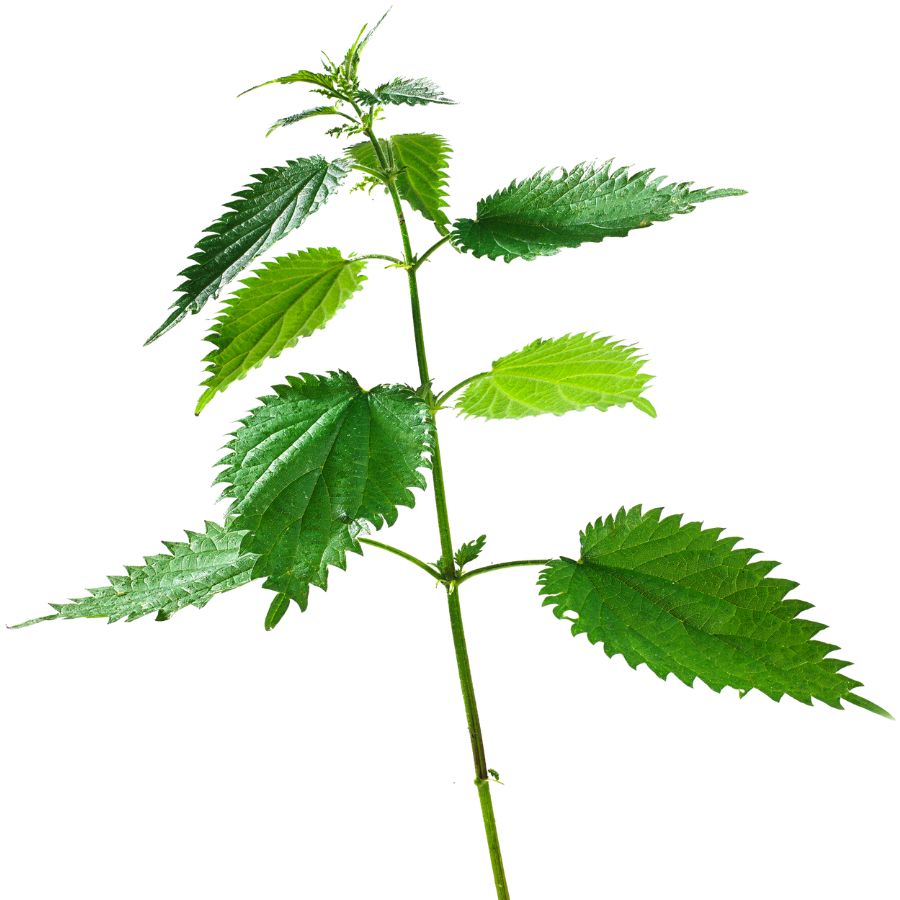
Stinging nettle is also known as burn weed or devil leaf, and it definitely earns those names. The tiny hairs on its leaves and stems can leave a painful, tingling rash if you brush against it raw, so always wear gloves when handling it.
Once it’s cooked or dried, those stingers lose their punch, and the leaves turn mild and slightly earthy in flavor. The texture softens too, making it a solid substitute for spinach in soups, pastas, or even as a simple sauté.
The young leaves and tender tops are what you want to collect. Avoid the tough lower stems and older leaves, which can be gritty or unpleasant to chew.
Some people confuse stinging nettle with purple deadnettle or henbit, but those don’t sting and have more rounded, fuzzy leaves. If the plant doesn’t make your skin react, it’s not stinging nettle.
American Plum (Prunus Americana)
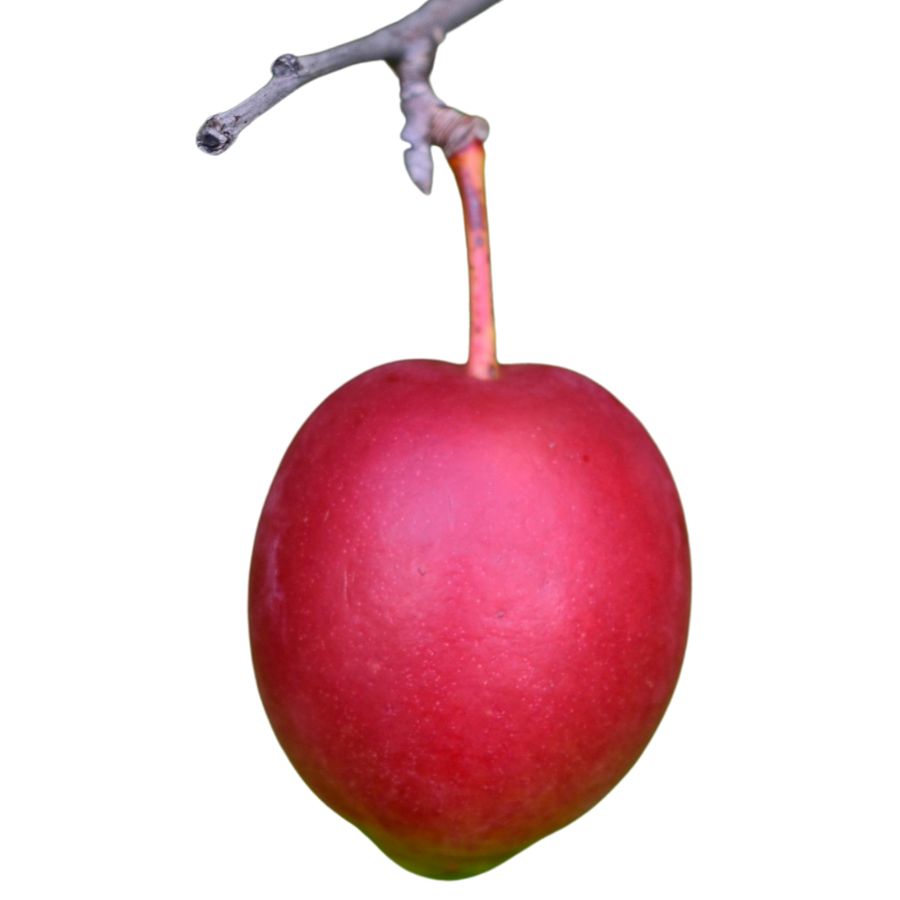
American plum, also called wild plum or river plum, produces small round fruits that range in color from yellow to deep red when ripe. The skin is slightly tart, but the flesh is soft, juicy, and sweet with a hint of spice.
You can eat the fruit raw or turn it into jellies, sauces, or wines—its natural pectin makes it ideal for preserves. Just avoid the seeds and leaves, which contain compounds that can release cyanide when crushed or chewed.
Its bark is rough and dark, and the branches often have short, sharp spines. The plant’s simple oval leaves and white spring flowers help distinguish it from less edible lookalikes like black cherry, which has longer, narrower leaves with a more bitter fruit.
If the fruit has a strong bitter almond smell when crushed, steer clear—it might be a different species altogether. American plum fruit clusters tend to be smaller and more tightly packed than those of cultivated varieties.
Jerusalem Artichoke (Helianthus tuberosus)
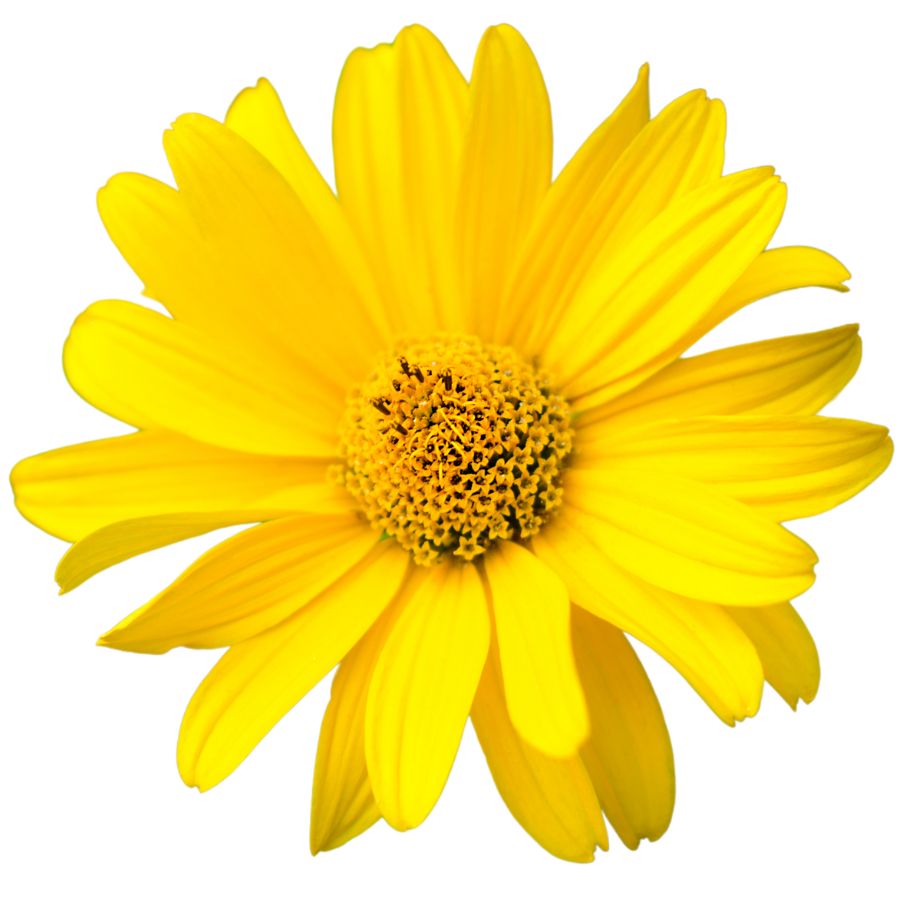
Jerusalem artichoke grows tall with sunflower-like blooms and has knobby underground tubers. The tubers are tan or reddish and look a bit like ginger root, though they belong to the sunflower family.
The part you’re after is the tuber, which has a nutty, slightly sweet flavor and a crisp texture when raw. You can roast, sauté, boil, or mash them like potatoes, and they hold their shape well in soups and stir-fries.
Some people experience gas or bloating after eating sunchokes due to the inulin they contain, so it’s a good idea to try a small amount first. Cooking them thoroughly can help reduce the chances of digestive discomfort.
Sunchokes don’t have many dangerous lookalikes, but it’s important not to confuse the plant with other sunflower relatives that don’t produce tubers. The above-ground part resembles a small sunflower, but it’s the knotted, underground tubers that are worth digging up.
Sweet Clover (Melilotus officinalis)
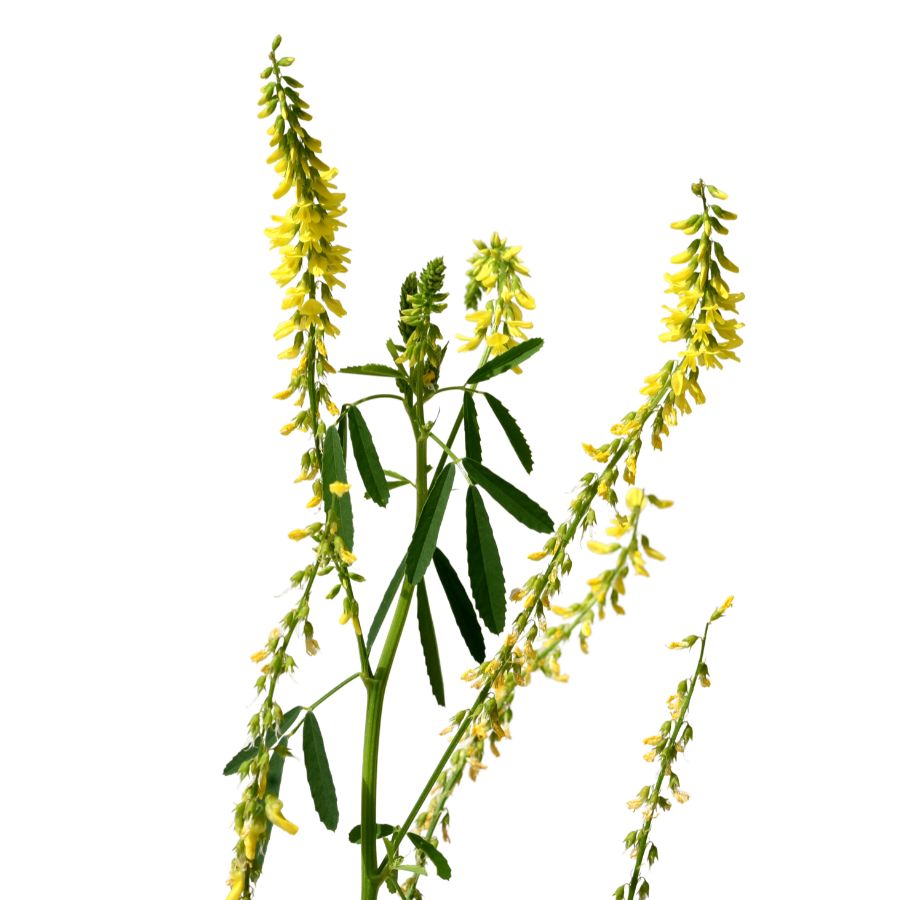
Sweet clover releases a vanilla-like scent that has made it valuable for centuries as a natural flavoring. This tall plant with small yellow flower clusters transforms when dried, releasing a pleasant fragrance used in traditional medicines and teas. Native Americans recognized its healing properties long before European settlers arrived.
Sweet clover grows in open fields and roadsides, reaching up to five feet tall with distinctive three-part leaves. The flowers and young leaves are edible, though best used in small amounts as flavoring rather than main ingredients.
Careful identification matters because sweet clover contains coumarin, which in large amounts or when spoiled can cause problems. The sweet smell helps confirm you have the right plant.
As medicine, sweet clover has been used to reduce swelling and thin blood. In the kitchen, it adds subtle flavor to teas and desserts. The dried plants were traditionally used to scent linens and repel insects from stored clothing.
Gooseberry (Ribes missouriense)
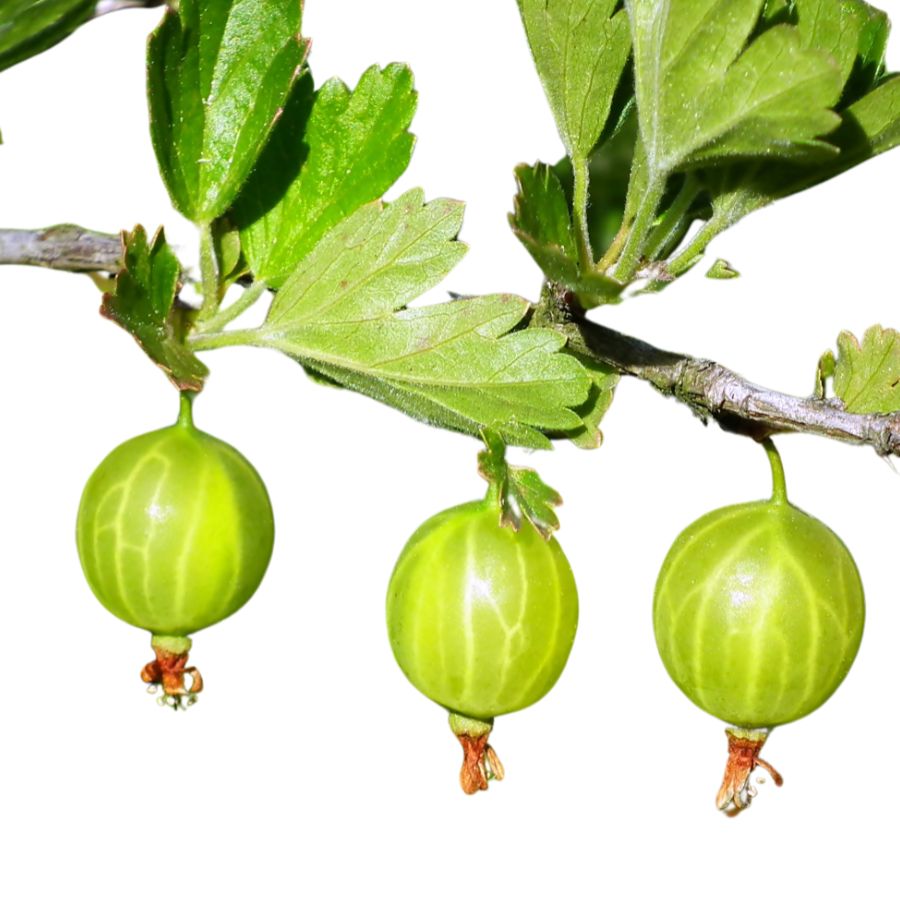
Gooseberry bushes protect their juicy berries with sharp thorns, changing from green to purple as they ripen. These native shrubs grow in woodland edges, offering different flavors throughout the growing season. Early settlers planted them near homesteads for reliable fruit.
The berries are what foragers seek. Green unripe gooseberries deliver a tart punch perfect for pies and preserves. Fully ripened ones develop sweetness that makes them good for fresh eating.
No dangerous lookalikes exist, making gooseberries a safe choice for new foragers. The thorny stems and ribbed berries with flower remnants at the end make identification straightforward.
Traditional recipes feature gooseberries in pies, jams, and fruit sauces. They pair well with both sweet and savory dishes. Their high pectin content means they thicken naturally when cooked. The berries provide vitamin C, fiber, and unique flavor that connects us to wild food traditions.
Golden Currant (Ribes aureum)
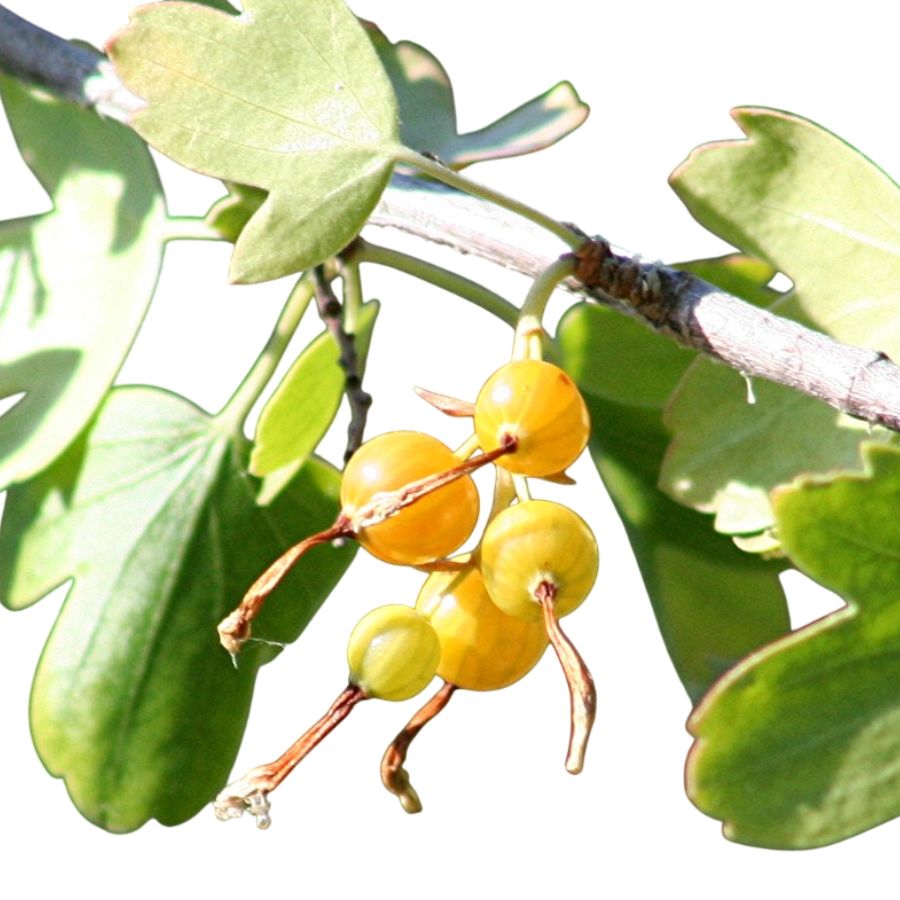
Golden currants produce small, round berries with smooth skin and a color range that includes golden yellow, red, and deep purple. Their flavor is tangy, slightly sweet, and develops a deeper complexity when cooked down.
The berries are edible raw, but you’ll probably want to use them in syrups, sauces, or dried into snacks. Some people dehydrate them like raisins, though they’re smaller and more tart.
Leaves are palmately lobed and lightly scented, which helps set golden currants apart from potentially toxic lookalikes like some ornamental currant hybrids. Those lookalikes often lack the same strong fragrance and have less pronounced lobing on the leaves.
Don’t eat the unripe berries in large amounts, as they can be harsh on the stomach. Fermenting the juice was a traditional method of preservation among various communities, adding a unique use to its culinary profile.
Wild Rose (Rosa woodsii)
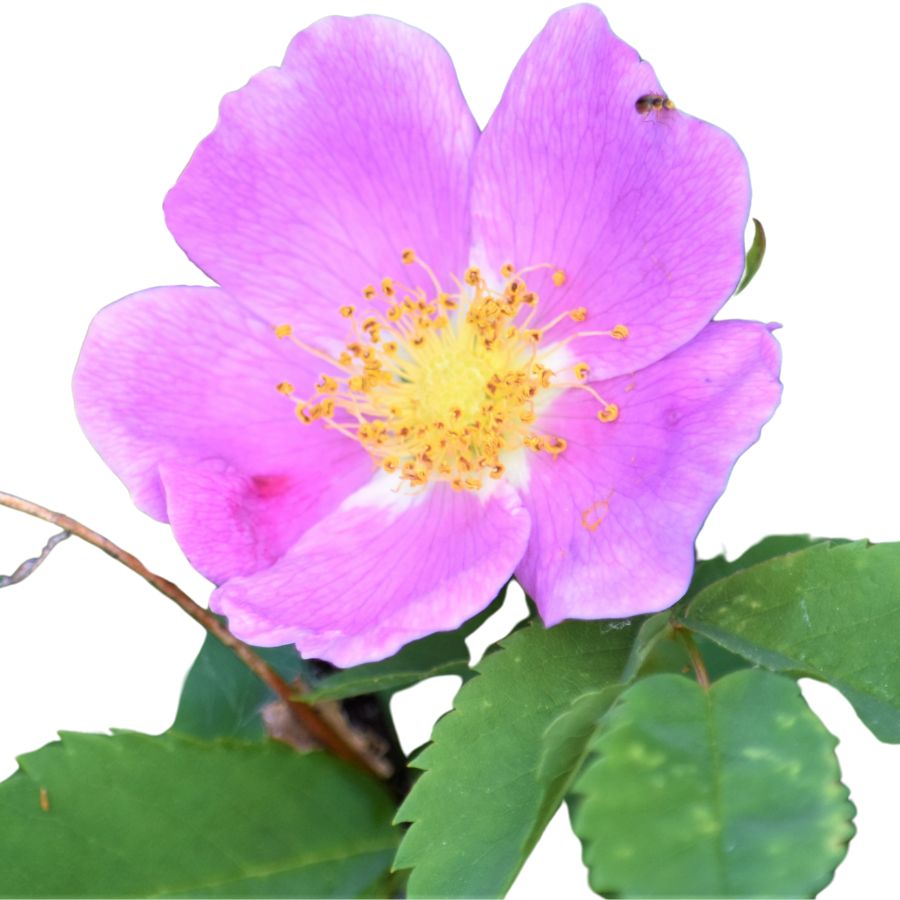
Wild roses produce bright red fruits called rose hips that contain more vitamin C than oranges. These nutritional powerhouses have helped people survive winter scurvy for generations. The simple five-petaled pink blooms transform into these valuable fruits by fall.
Rose hips are the most valuable part for foragers. The outer flesh is edible after the seeds and irritating inner hairs are removed. They taste tart and fruity, especially after a frost sweetens them naturally.
Identification is simple – look for woody stems with thorns and compound leaves with toothed edges. The classic five-petaled flower shape and later the bright red hips make wild roses unmistakable.
Beyond their beauty, wild roses serve many purposes. The petals flavor teas, jellies, and honey. Rose hip tea remains popular for boosting immunity during cold seasons. Historically, the fruits were a critical winter vitamin source when fresh produce was unavailable.
Lamb’s Quarters (Chenopodium album)
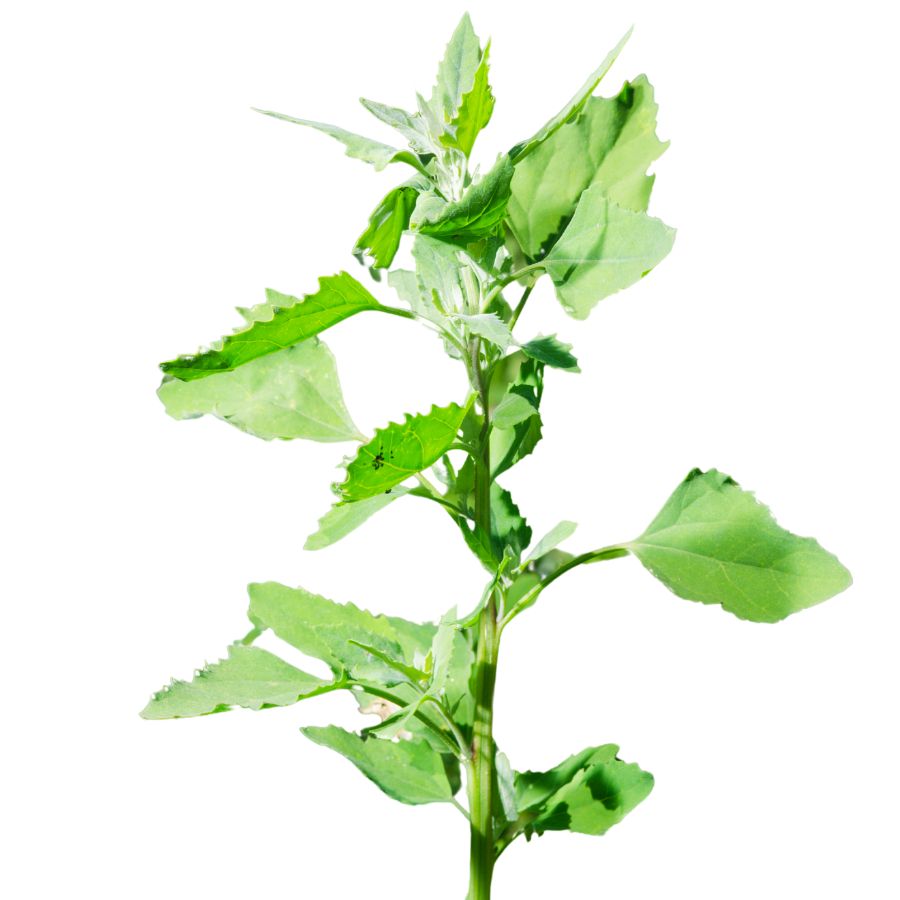
Lamb’s quarters, also called wild spinach and pigweed, has soft green leaves that often look dusted with a white, powdery coating. The leaves are shaped a little like goose feet, with slightly jagged edges and a smooth underside that feels almost velvety when you touch it.
A few plants can be confused with lamb’s quarters, like some types of nightshade, but true lamb’s quarters never have berries and its leaves are usually coated in that distinctive white bloom. Always check that the stems are grooved and not round and smooth like the poisonous lookalikes.
When you taste lamb’s quarters, you will notice it has a mild, slightly nutty flavor that gets richer when cooked. The young leaves, tender stems, and even the seeds are all edible, but you should avoid eating the older stems because they become tough and stringy.
People often sauté lamb’s quarters like spinach, blend it into smoothies, or dry the leaves for later use in soups and stews. It is also rich in oxalates, so you will want to cook it before eating large amounts to avoid any problems.
Evening Primrose (Oenothera biennis)
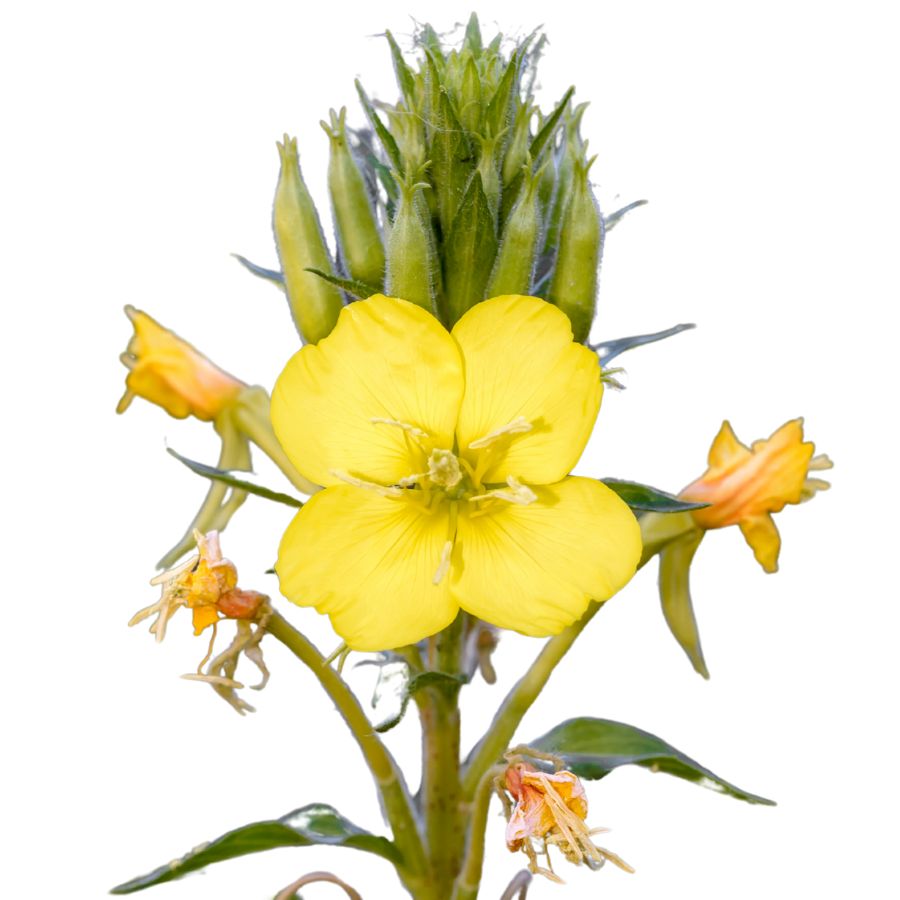
The bright yellow blooms of common evening primrose, or hog weed as it’s also called, only open in low light and tend to wilt by morning. It has a coarse stem and elongated leaves that spiral upward, with buds that cluster near the top.
Its root has a taste similar to salsify and works well roasted or baked. Flower buds and young leaves are sometimes boiled like spinach to reduce bitterness.
Some parts of the plant resemble helenium, which is not safe to eat—helenium leaves are narrower and more aromatic when crushed. The seeds of common evening primrose can be ground into a paste or flour-like mix for cooking.
Though many parts of the plant are used in food, the flower stalks get tough quickly and aren’t usually eaten. Stick with the first-year roots and early foliage for better flavor and texture.
Highbush Cranberry (Viburnum trilobum)
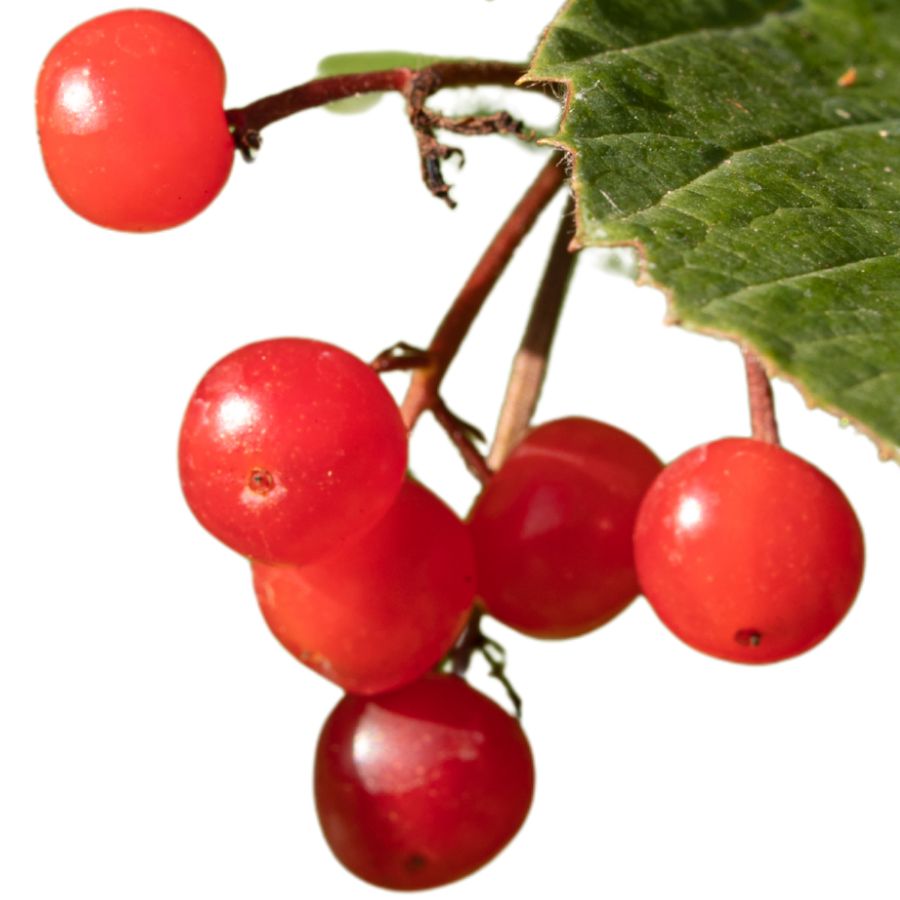
Highbush Cranberry grows as a large shrub with maple-like leaves that turn bright red in fall. Its clusters of white flowers produce bright red berries that hang on branches well into winter, providing food for wildlife when other sources are scarce.
The berries have a tart, acidic flavor similar to true cranberries but with a slightly bitter aftertaste. Many foragers collect them after the first frost, which helps sweeten the berries naturally.
Only the berries are edible, while the stems, leaves, and seeds should be avoided. When harvesting, look for firm, bright red berries growing in clusters.
Be careful not to confuse Highbush Cranberry with the similar-looking European cranberry bush, which has less palatable fruits. The true Highbush Cranberry has three-lobed leaves and translucent red berries with a single flat seed inside.
Wild Licorice (Glycyrrhiza lepidota)
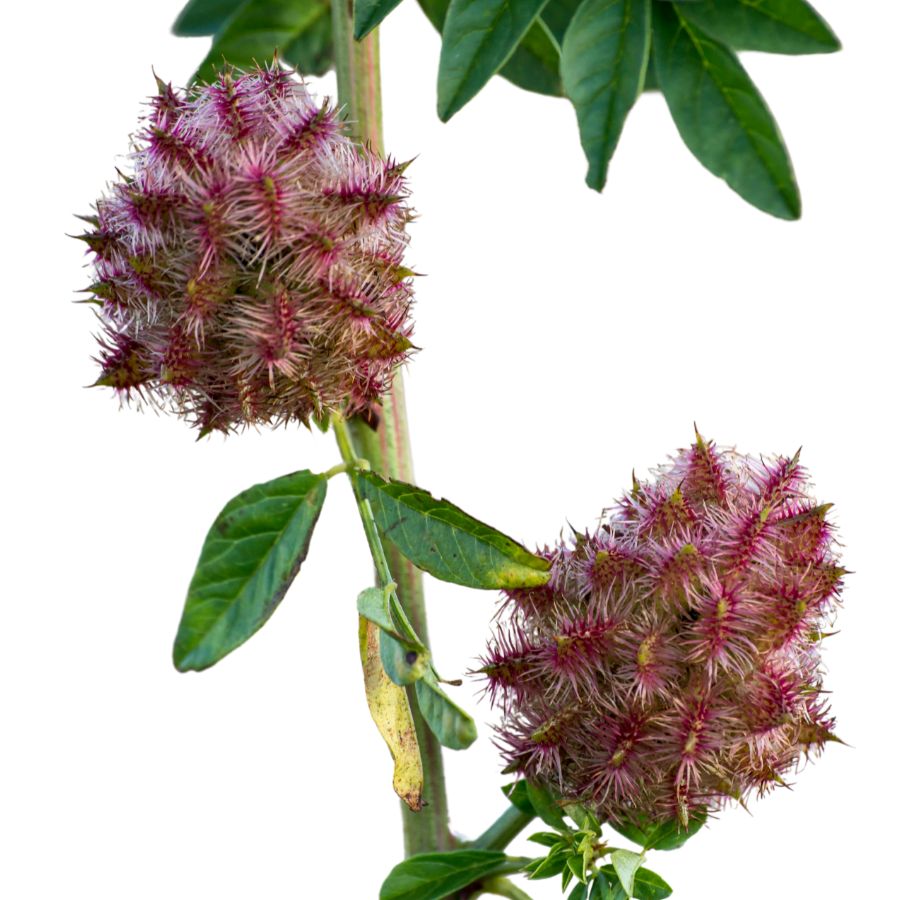
The sweet, woody root of Wild Licorice has been used for centuries by Native Americans for both food and medicine. This native perennial grows up to three feet tall with compound leaves and small yellowish-white flower clusters that develop into bur-like seed pods.
Wild Licorice roots taste similar to commercial licorice but with a milder flavor and natural sweetness. These roots can be chewed raw or dried and ground for tea.
When identifying Wild Licorice, look for the distinctive compound leaves with 11-19 leaflets and the sticky burs that cling to clothing and animal fur. The plant grows in meadows, prairies, and along riverbanks across much of North America.
No dangerous lookalikes exist, but beginners should still practice caution and proper identification. Pregnant women and those with high blood pressure, kidney disease, or heart conditions should avoid licorice root due to its medicinal properties.
Cattail (Typha spp.)
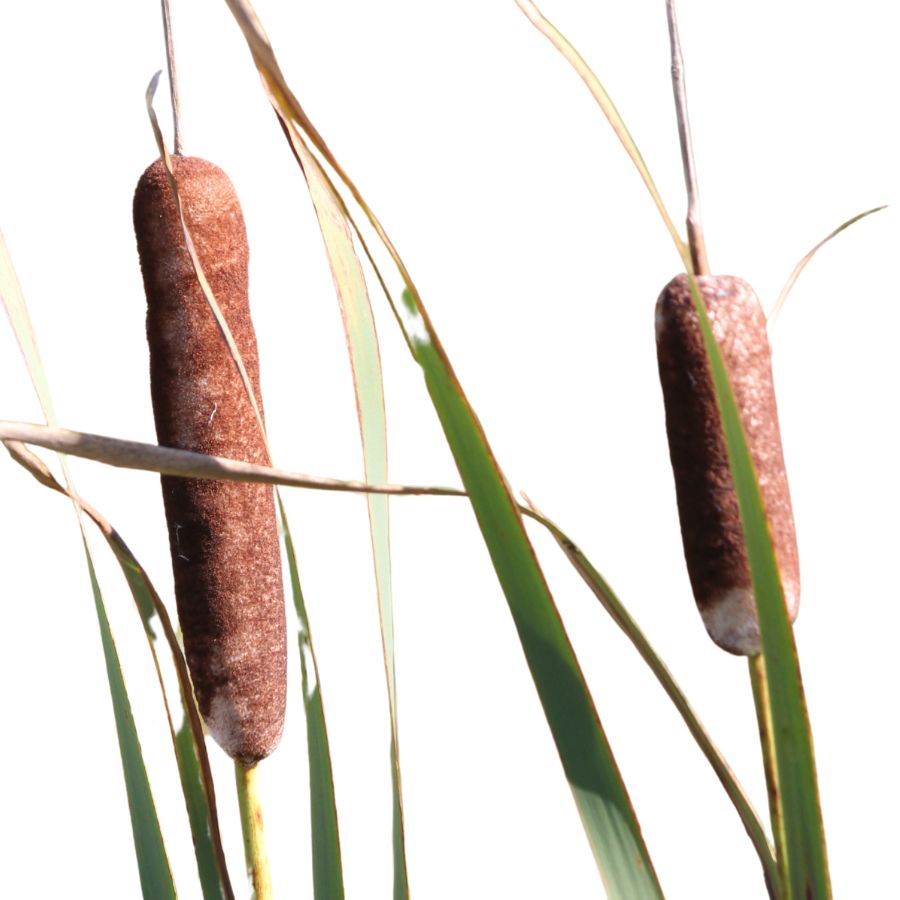
Cattails, often called bulrushes or corn dog grass, are easy to spot with their tall green stalks and brown, sausage-shaped flower heads. They grow thickly along the edges of ponds, lakes, and marshes, forming dense stands that are hard to miss.
Almost every part of the cattail is edible, including the young shoots, flower heads, and starchy rhizomes. You can eat the tender shoots raw, boil the flower heads like corn on the cob, or grind the rhizomes into flour for baking.
Besides food, cattails have long been used for making mats, baskets, and even insulation by weaving the dried leaves and using the fluffy seeds. Their combination of usefulness and abundance has made them an important survival plant for many cultures.
One thing you need to watch for is young cattail shoots being confused with similar-looking plants like iris, which are toxic. A real cattail shoot will have a mild cucumber-like smell when you snap it open, while iris plants smell bitter or unpleasant.
Amaranth (Amaranthus retroflexus)
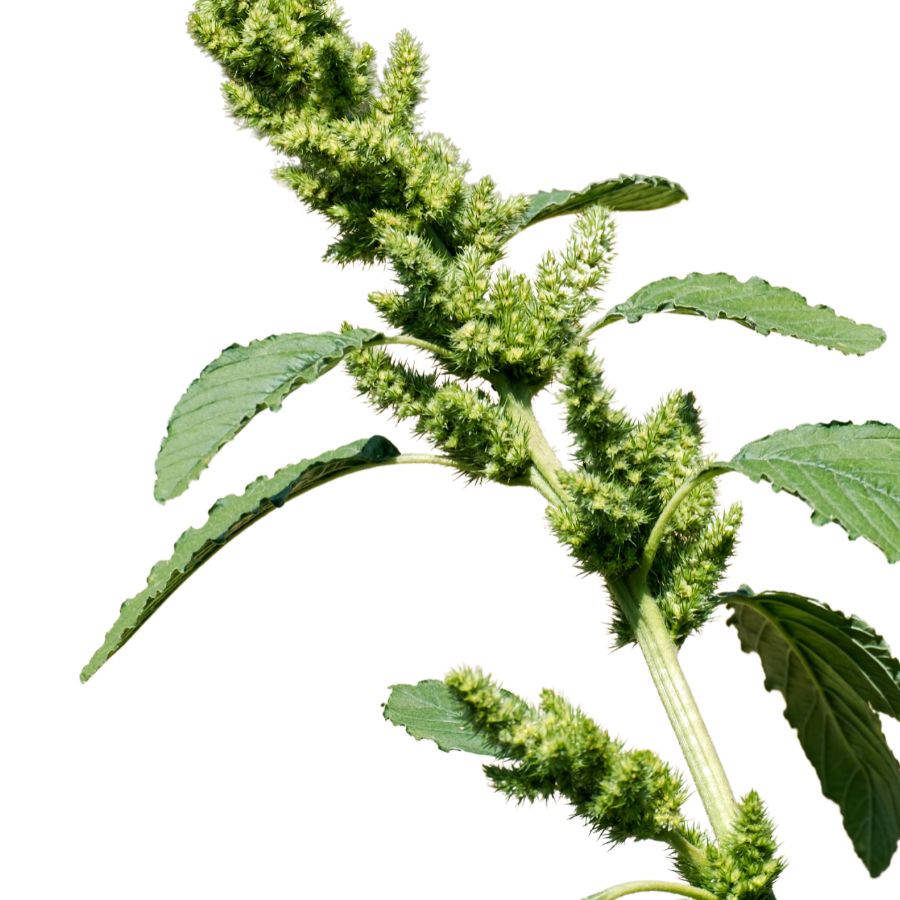
Towering up to six feet tall with rough, oval-shaped leaves and distinctive flower spikes, Amaranth has been cultivated for thousands of years by civilizations worldwide. The tiny black seeds pack impressive nutritional value, containing more protein than most grains.
Both the seeds and young leaves are edible parts of this plant. The tender leaves can be harvested and cooked like spinach, offering a nutritious green vegetable rich in vitamins and minerals.
Amaranth grows as a common “weed” in disturbed soils, gardens, and agricultural fields. When harvesting, choose young leaves for the best flavor and texture, as older leaves become bitter and tough.
Some similar-looking plants in the Amaranth family exist, but most are also edible. Always verify your identification before consuming any wild plant, especially for beginners who might confuse it with other weedy species.
Sweet Flag (Acorus calamus)
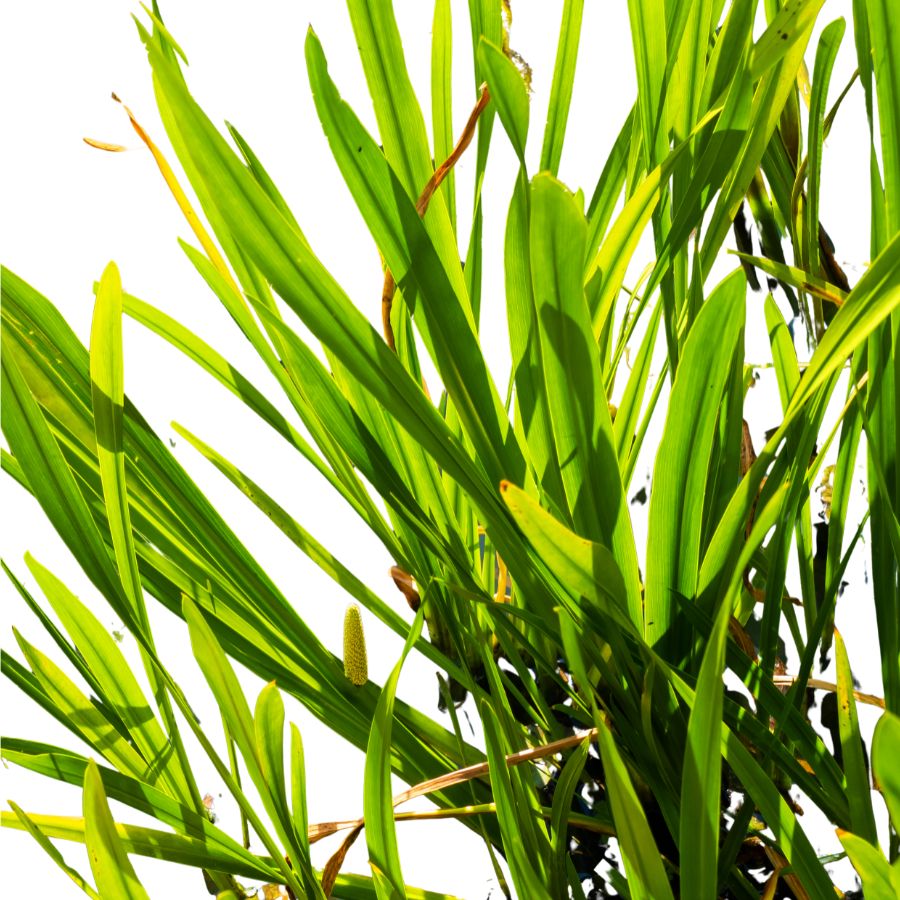
Sweet Flag features sword-like leaves growing from a fragrant rhizome that has been prized across cultures for its distinctive aroma and flavor. When crushed, the leaves and rhizome release a sweet, spicy scent similar to cinnamon mixed with citrus.
The plant thrives in wetland areas, often found growing along the edges of ponds, lakes, and slow-moving streams. Its tall, iris-like appearance makes it fairly easy to spot in these habitats.
When foraging Sweet Flag, harvest only the rhizome, which can be used fresh, dried, or candied. The young inner portions of the rhizome have the mildest flavor and are preferred by many foragers.
Identification is fairly straightforward, as few plants share its habitat and distinctive aromatic qualities. The key feature to look for is the zigzag pattern when viewing a leaf cross-section. Be careful not to confuse it with iris species, which lack Sweet Flag’s distinctive aroma and can cause stomach upset.Add to Conversation
Toxic Plants That Look Like Edible Plants
There are plenty of wild edibles to choose from, but some toxic native plants closely resemble them. Mistaking the wrong one can lead to severe illness or even death, so it’s important to know exactly what you’re picking.
Poison Hemlock (Conium maculatum)
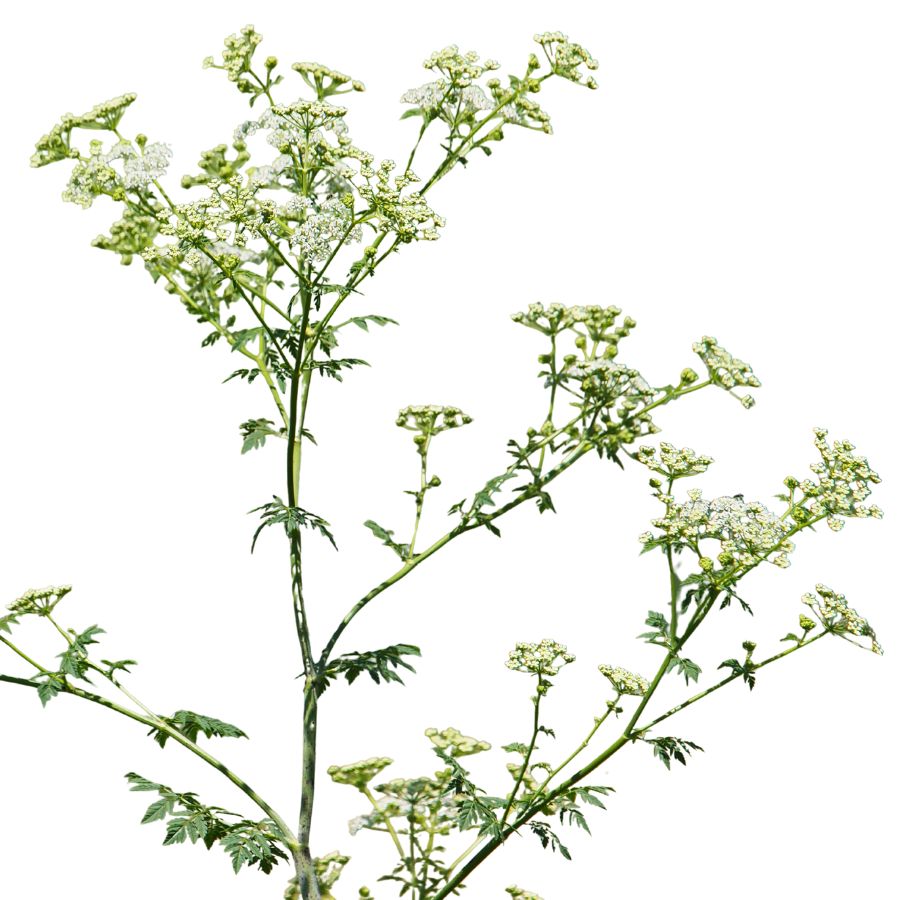
Often mistaken for: Wild carrot (Daucus carota)
Poison hemlock is a tall plant with lacy leaves and umbrella-like clusters of tiny white flowers. It has smooth, hollow stems with purple blotches and grows in sunny places like roadsides, meadows, and stream banks.
Unlike wild carrot, which has hairy stems and a dark central floret, poison hemlock has a musty odor and no flower center spot. It’s extremely toxic; just a small amount can be fatal, and even touching the sap can irritate the skin.
Water Hemlock (Cicuta spp.)
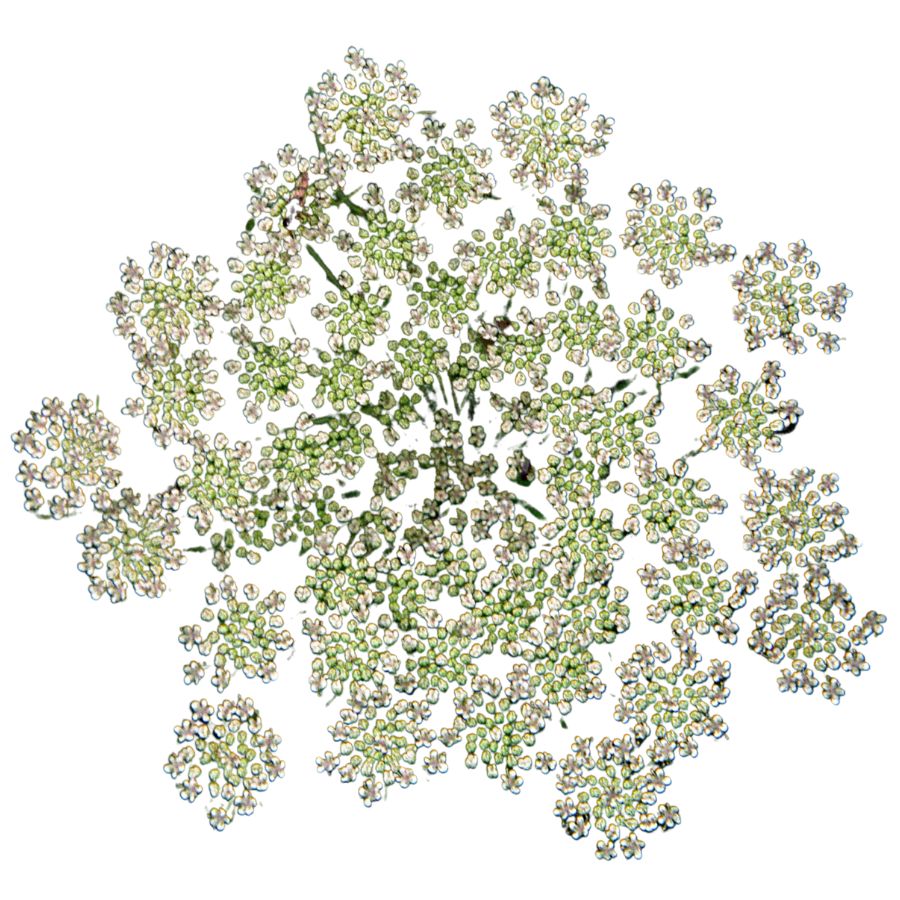
Often mistaken for: Wild parsnip (Pastinaca sativa) or wild celery (Apium spp.)
Water hemlock is a tall, branching plant with umbrella-shaped clusters of small white flowers. It grows in wet places like stream banks, marshes, and ditches, with stems that often show purple streaks or spots.
It can be confused with wild parsnip or wild celery, but its thick, hollow roots have internal chambers and release a yellow, foul-smelling sap when cut. Water hemlock is the most toxic plant in North America, and just a small amount can cause seizures, respiratory failure, and death.
False Hellebore (Veratrum viride)
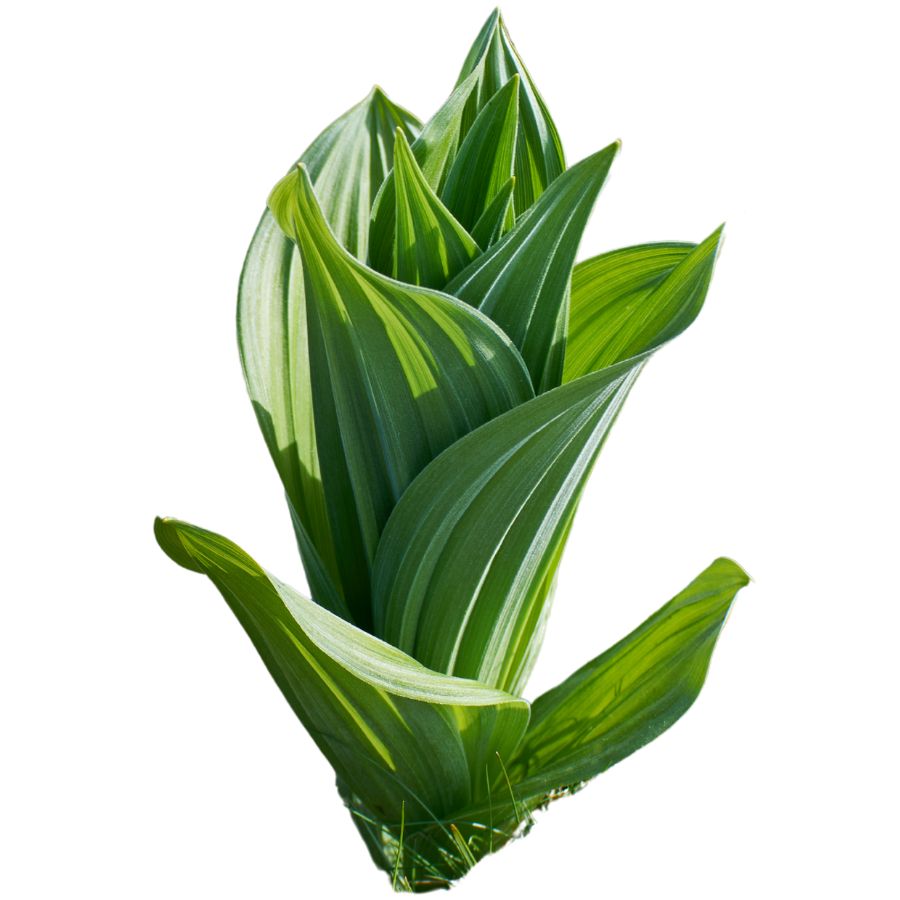
Often mistaken for: Ramps (Allium tricoccum)
False hellebore is a tall plant with broad, pleated green leaves that grow in a spiral from the base, often appearing early in spring. It grows in moist woods, meadows, and along streams.
It’s commonly mistaken for ramps, but ramps have a strong onion or garlic smell, while false hellebore is odorless and later grows a tall flower stalk. The plant is highly toxic, and eating any part can cause nausea, a slowed heart rate, and even death due to its alkaloids that affect the nervous and cardiovascular systems.
Death Camas (Zigadenus spp.)
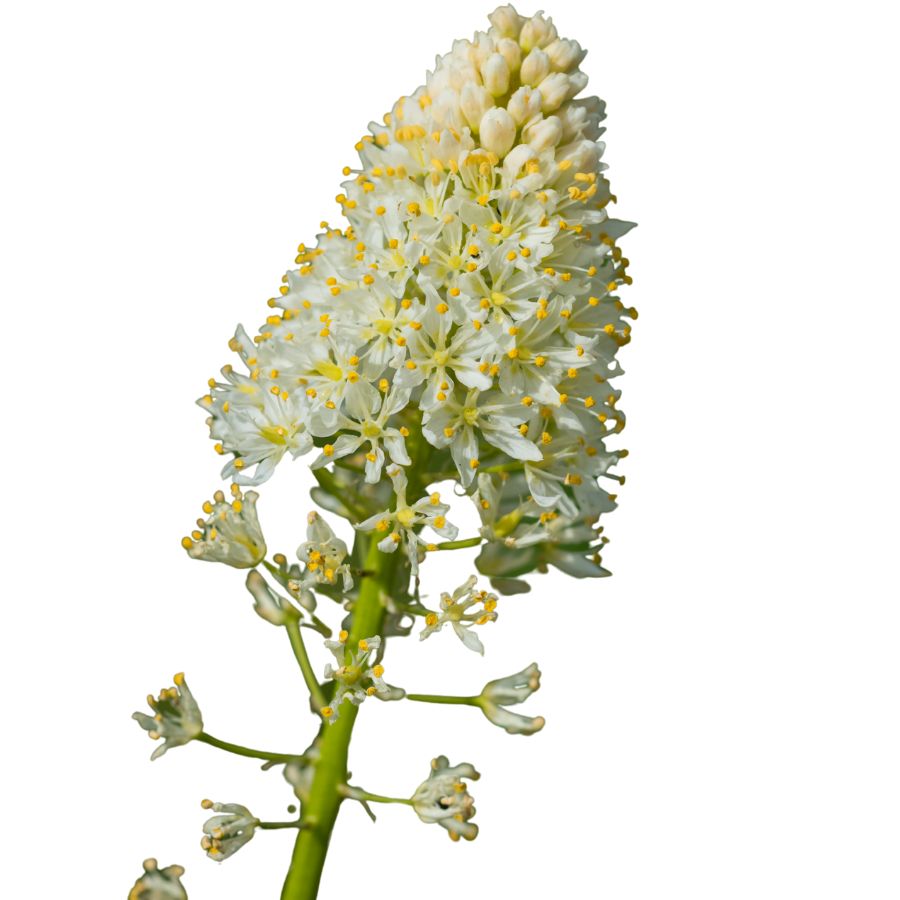
Often mistaken for: Wild onion or wild garlic (Allium spp.)
Death camas is a slender, grass-like plant that grows from underground bulbs and is found in open woods, meadows, and grassy hillsides. It has small, cream-colored flowers in loose clusters atop a tall stalk.
It’s often confused with wild onion or wild garlic due to their similar narrow leaves and habitats, but only Allium plants have a strong onion or garlic scent, while death camas has none. The plant is extremely poisonous, especially the bulbs, and even a small amount can cause nausea, vomiting, a slowed heartbeat, and potentially fatal respiratory failure.
Buckthorn Berries (Rhamnus spp.)
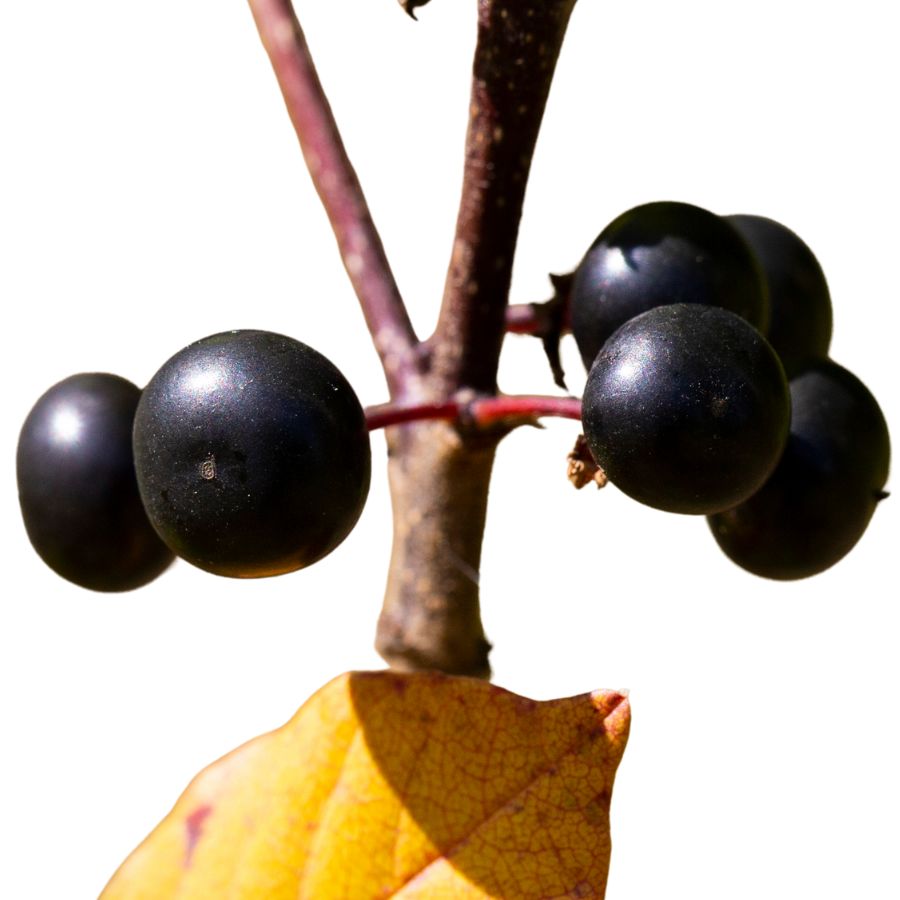
Often mistaken for: Elderberries (Sambucus spp.)
Buckthorn is a shrub or small tree often found along woodland edges, roadsides, and disturbed areas. It produces small, round berries that ripen to dark purple or black and usually grow in loose clusters.
These berries are sometimes mistaken for elderberries and other wild fruits, which also grow in dark clusters, but elderberries form flat-topped clusters on reddish stems while buckthorn berries are more scattered. Buckthorn berries are unsafe to eat as they contain compounds that can cause cramping, vomiting, and diarrhea, and large amounts may lead to dehydration and serious digestive problems.
Mayapple (Podophyllum peltatum)
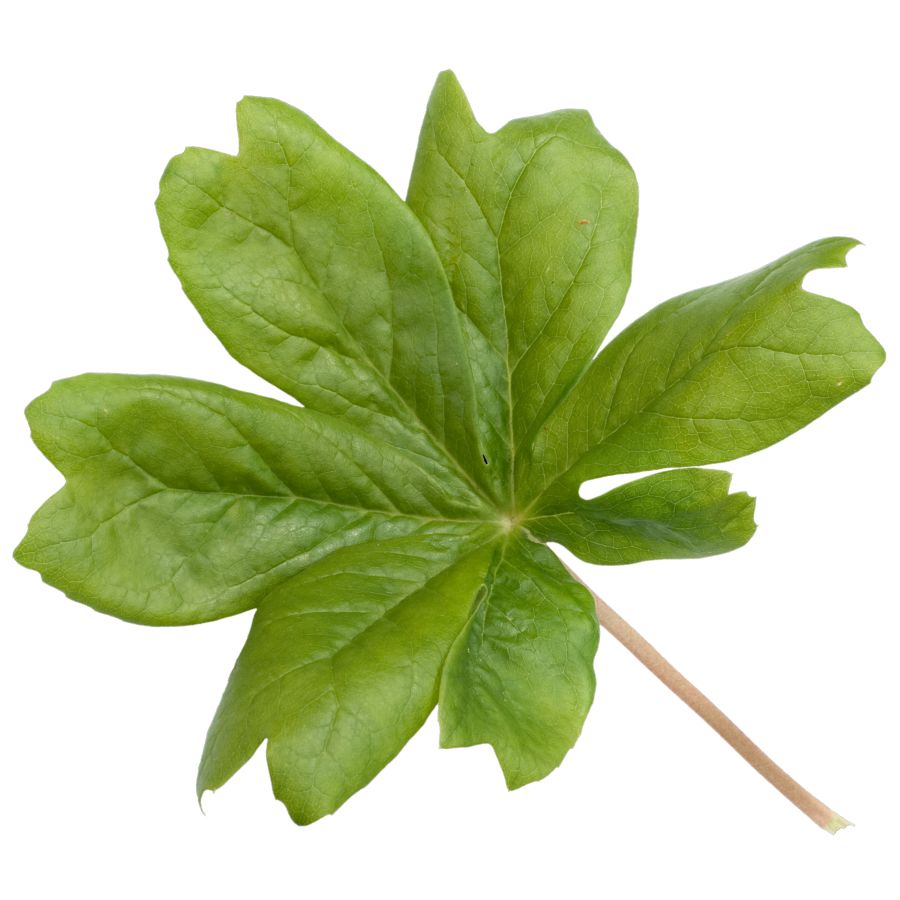
Often mistaken for: Wild grapes (Vitis spp.)
Mayapple is a low-growing plant found in shady forests and woodland clearings. It has large, umbrella-like leaves and produces a single pale fruit hidden beneath the foliage.
The unripe fruit resembles a small green grape, causing confusion with wild grapes, which grow in woody clusters on vines. All parts of the mayapple are toxic except the fully ripe, yellow fruit, which is only safe in small amounts. Eating unripe fruit or other parts can lead to nausea, vomiting, and severe dehydration.
Virginia Creeper (Parthenocissus quinquefolia)
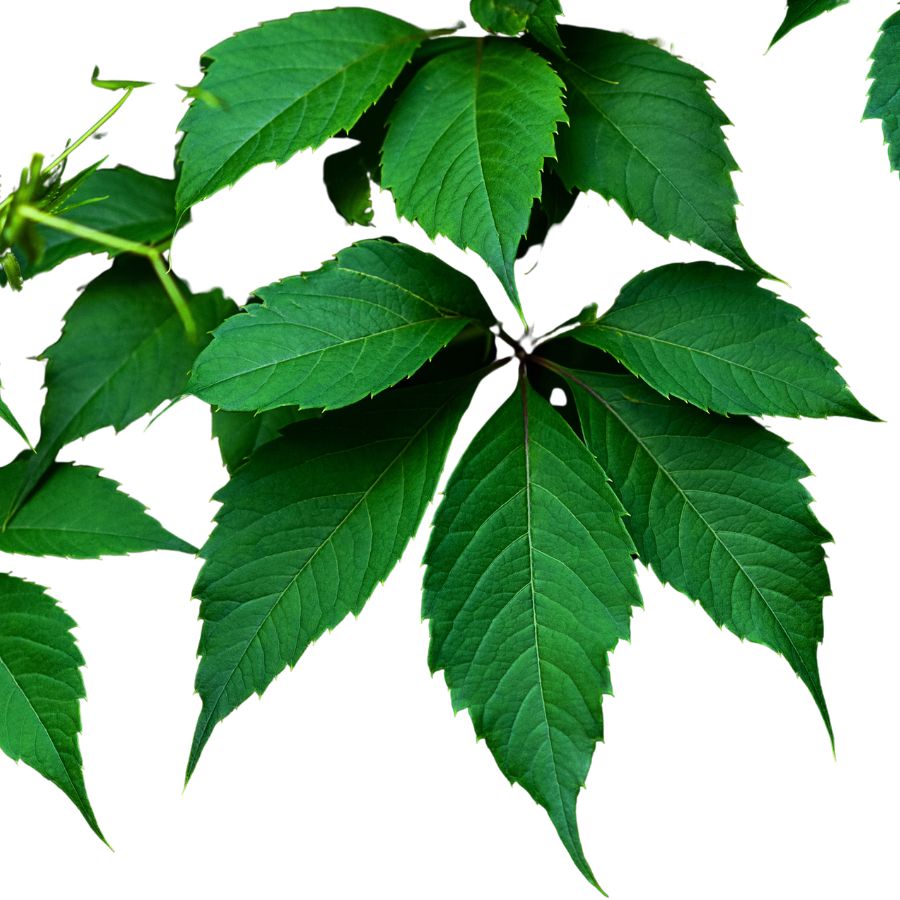
Often mistaken for: Wild grapes (Vitis spp.)
Virginia creeper is a fast-growing vine found on fences, trees, and forest edges. It has five leaflets per stem and produces small, bluish-purple berries from late summer to fall.
It’s often confused with wild grapes since both are climbing vines with similar berries, but grapevines have large, lobed single leaves and tighter fruit clusters. Virginia creeper’s berries are toxic to humans and contain oxalate crystals that can cause nausea, vomiting, and throat irritation.
Castor Bean (Ricinus communis)
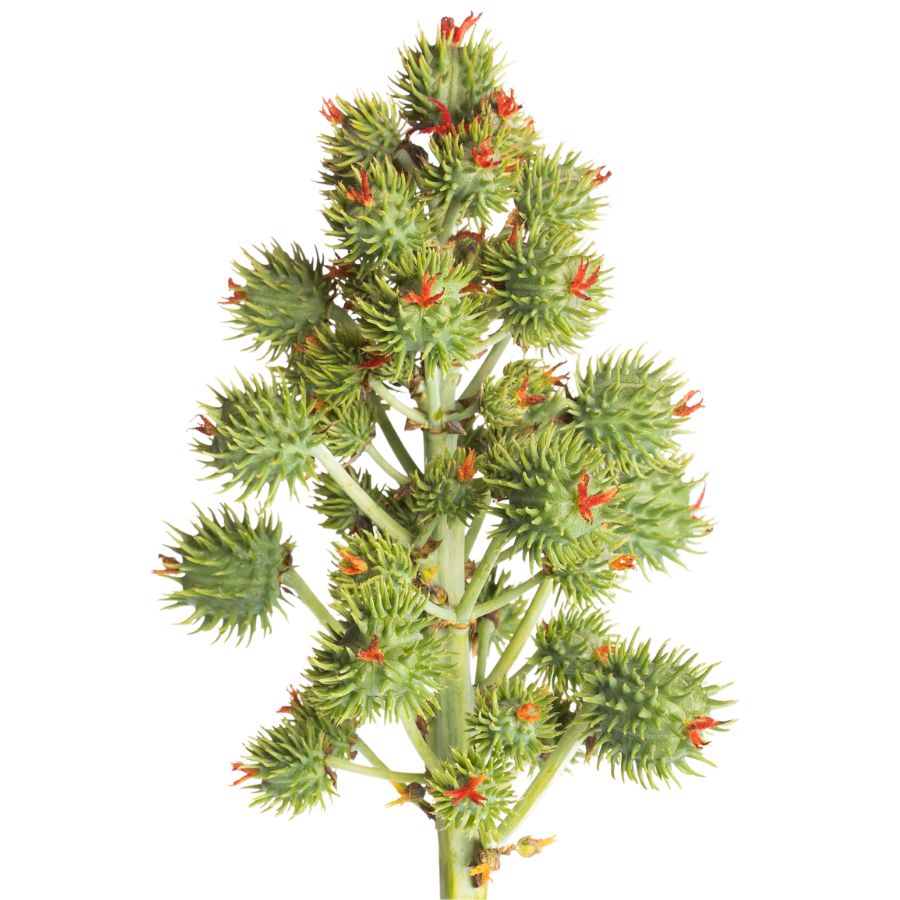
Often mistaken for: Wild rhubarb (Rumex spp. or Rheum spp.)
Castor bean is a bold plant with large, lobed leaves and tall red or green stalks, often found in gardens, along roadsides, and in disturbed areas in warmer regions in the US. Its red-tinged stems and overall size can resemble wild rhubarb to the untrained eye.
Unlike rhubarb, castor bean plants produce spiny seed pods containing glossy, mottled seeds that are extremely toxic. These seeds contain ricin, a deadly compound even in small amounts. While all parts of the plant are toxic, the seeds are especially dangerous and should never be handled or ingested.
A Quick Reminder
Before we get into the specifics about where and how to find these mushrooms, we want to be clear that before ingesting any wild mushroom, it should be identified with 100% certainty as edible by someone qualified and experienced in mushroom identification, such as a professional mycologist or an expert forager. Misidentification of mushrooms can lead to serious illness or death.
All mushrooms have the potential to cause severe adverse reactions in certain individuals, even death. If you are consuming mushrooms, it is crucial to cook them thoroughly and properly and only eat a small portion to test for personal tolerance. Some people may have allergies or sensitivities to specific mushrooms, even if they are considered safe for others.
The information provided in this article is for general informational and educational purposes only. Foraging for wild mushrooms involves inherent risks.
How to Get the Best Results Foraging
Safety should always come first when it comes to foraging. Whether you’re in a rural forest or a suburban greenbelt, knowing how to harvest wild foods properly is a key part of staying safe and respectful in the field.
Always Confirm Plant ID Before You Harvest Anything
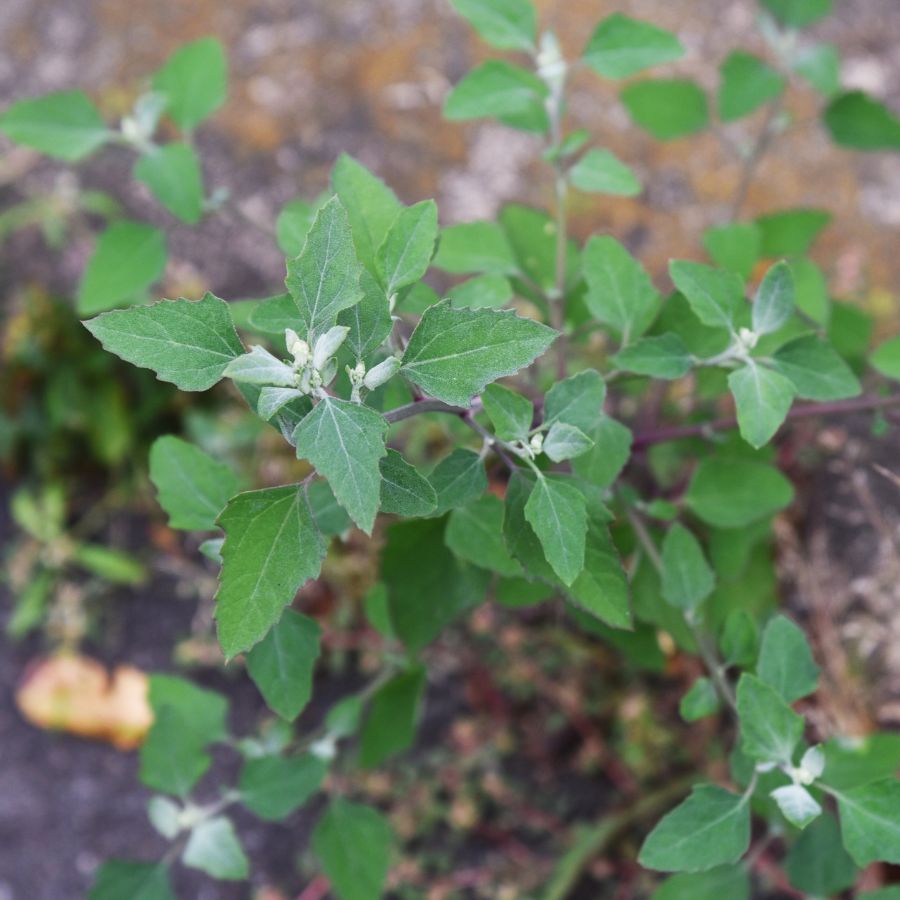
Knowing exactly what you’re picking is the most important part of safe foraging. Some edible plants have nearly identical toxic lookalikes, and a wrong guess can make you seriously sick.
Use more than one reliable source to confirm your ID, like field guides, apps, and trusted websites. Pay close attention to small details. Things like leaf shape, stem texture, and how the flowers or fruits are arranged all matter.
Not All Edible Plants Are Safe to Eat Whole
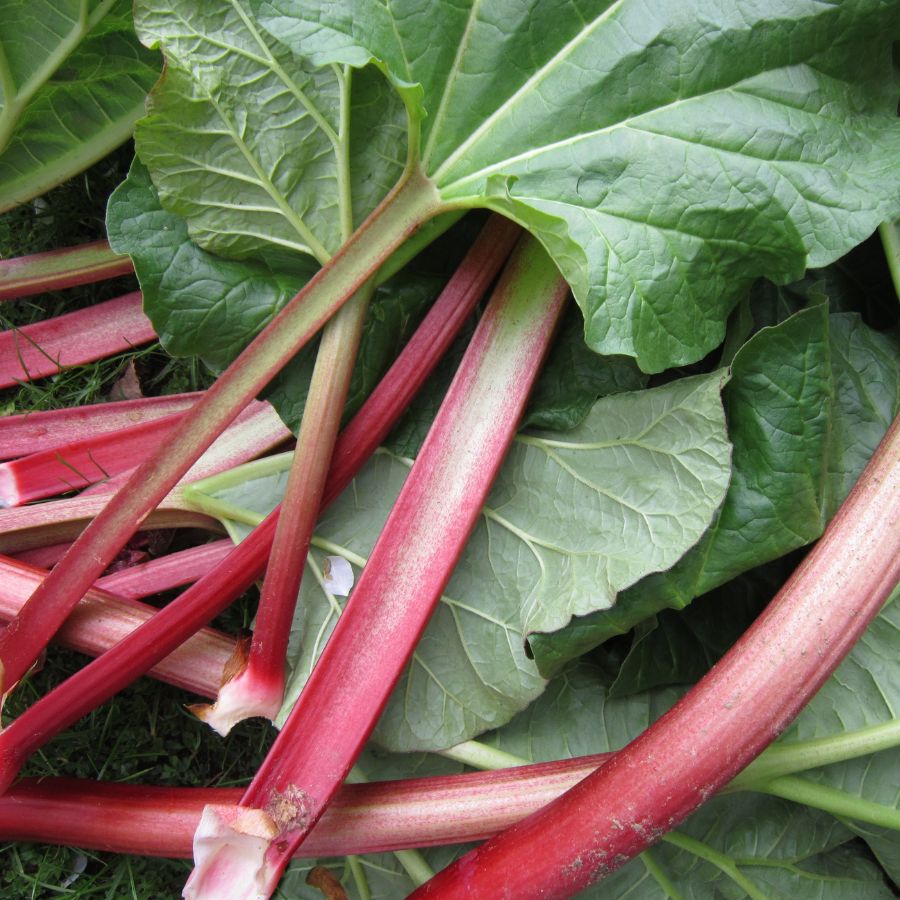
Just because a plant is edible doesn’t mean every part of it is safe. Some plants have leaves, stems, or seeds that can be toxic if eaten raw or prepared the wrong way.
For example, pokeweed is only safe when young and properly cooked, while elderberries need to be heated before eating. Rhubarb stems are fine, but the leaves are poisonous. Always look up which parts are edible and how they should be handled.
Avoid Foraging in Polluted or Contaminated Areas
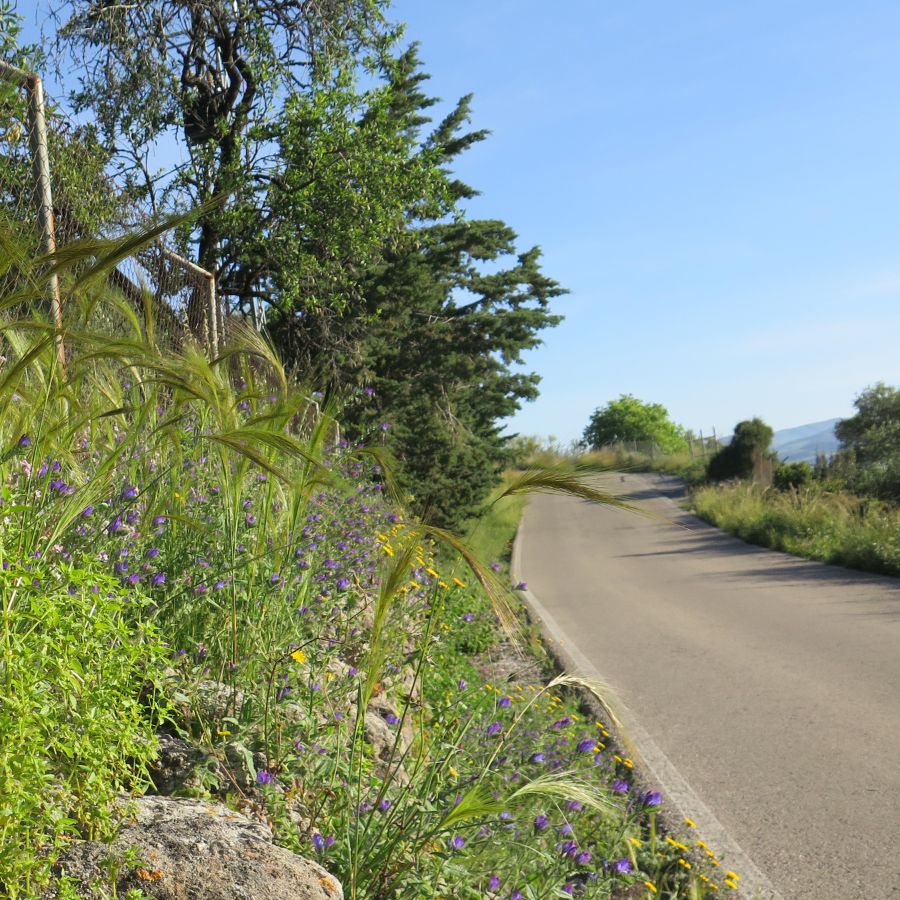
Where you forage matters just as much as what you pick. Plants growing near roads, buildings, or farmland might be coated in chemicals or growing in polluted soil.
Even safe plants can take in harmful substances from the air, water, or ground. Stick to clean, natural areas like forests, local parks that allow foraging, or your own yard when possible.
Don’t Harvest More Than What You Need
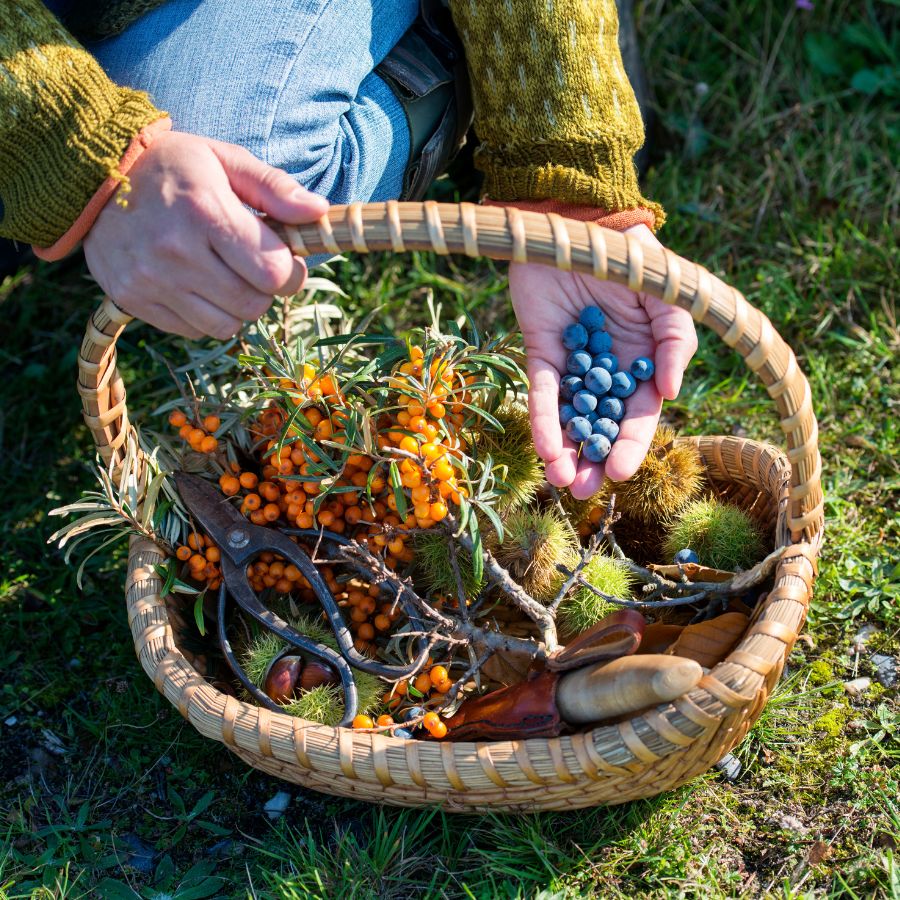
When you forage, take only what you plan to use. Overharvesting can hurt local plant populations and reduce future growth in that area.
Leaving plenty behind helps plants reproduce and supports wildlife that depends on them. It also ensures other foragers have a chance to enjoy the same resources.
Protect Yourself and Your Finds with Proper Foraging Gear

Having the right tools makes foraging easier and safer. Gloves protect your hands from irritants like stinging nettle, and a good knife or scissors lets you harvest cleanly without damaging the plant.
Use a basket or breathable bag to carry what you collect. Plastic bags hold too much moisture and can cause your greens to spoil before you get home.
This forager’s toolkit covers the essentials for any level of experience.
Watch for Allergic Reactions When Trying New Wild Foods

Even if a wild plant is safe to eat, your body might react to it in unexpected ways. It’s best to try a small amount first and wait to see how you feel.
Be extra careful with kids or anyone who has allergies. A plant that’s harmless for one person could cause a reaction in someone else.
Check Local Rules Before Foraging on Any Land
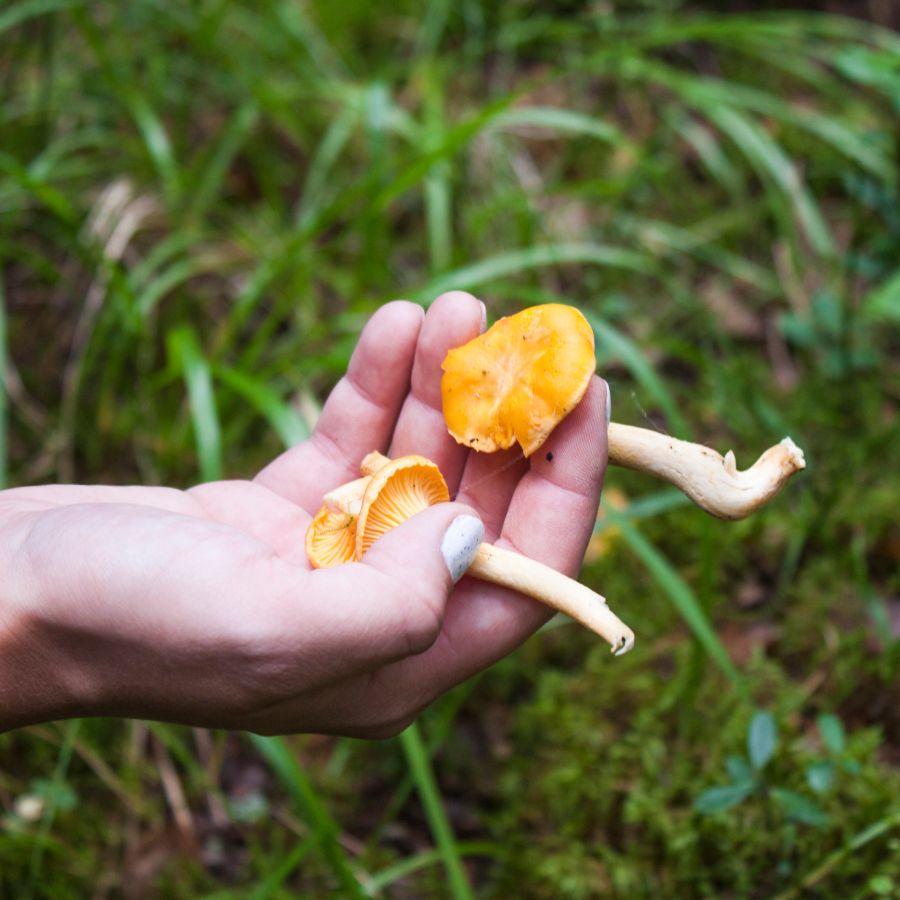
Before you start foraging, make sure you know the rules for the area you’re in. What’s allowed in one spot might be completely off-limits just a few miles away.
Some public lands permit limited foraging, while others, like national parks, usually don’t allow it at all. If you’re on private property, always get permission first.
Before you head out
Before embarking on any foraging activities, it is essential to understand and follow local laws and guidelines. Always confirm that you have permission to access any land and obtain permission from landowners if you are foraging on private property. Trespassing or foraging without permission is illegal and disrespectful.
For public lands, familiarize yourself with the foraging regulations, as some areas may restrict or prohibit the collection of mushrooms or other wild foods. These regulations and laws are frequently changing so always verify them before heading out to hunt. What we have listed below may be out of date and inaccurate as a result.
Where to Find Forageables in the State
There is a range of foraging spots where edible plants grow naturally and often in abundance:
| Plant | Locations |
|---|---|
| American Plum (Prunus americana) | – Theodore Roosevelt National Park – Lake Metigoshe State Park – Des Lacs National Wildlife Refuge |
| Chokecherry (Prunus virginiana) | – Turtle River State Park – Cross Ranch State Park – Long Lake National Wildlife Refuge |
| Buffalo Berry (Shepherdia argentea) | – Knife River Indian Villages – Devils Lake Wetland Complex – Lake Sakakawea State Park |
| Wild Rose (Rosa woodsii) | – Fort Ransom State Park – Icelandic State Park – J. Clark Salyer National Wildlife Refuge |
| Wild Onion (Allium canadense) | – Sheyenne National Grassland – McDowell Dam Recreation Area – Harmon Lake Recreation Area |
| Wild Garlic (Allium vineale) | – Little Missouri National Grassland – Upper Souris National Wildlife Refuge – Lake Tschida Recreation Area |
| Lamb’s Quarters (Chenopodium album) | – Lostwood National Wildlife Refuge – Tetrault Woods State Forest – Hobart Lake National Wildlife Refuge |
| Amaranth (Amaranthus retroflexus) | – Sullys Hill National Game Preserve – White Horse Hill National Game Preserve – Mouse River Park |
| Purslane (Portulaca oleracea) | – Lake Ilo National Wildlife Refuge – Pembina Gorge – Garrison Dam Tailrace |
| Curled Dock (Rumex crispus) | – Kellys Slough National Wildlife Refuge – Painted Woods Lake – Westhope Wildlife Area |
| Sorrel (Rumex acetosella) | – Beaver Lake State Park – Missouri River Sandbars – Minot Riverside Nature Park |
| Stinging Nettle (Urtica dioica) | – White Lake Wetlands – Grahams Island State Park – Nelson Lake WMA |
| Plantain (Plantago major) | – Ransom County Prairie Reserve – Mouse River Park – Turtle Mountains State Forest |
| Dandelion (Taraxacum officinale) | – Crow Flies High Butte – Steeles Prairie Fen – Pelican Lake Recreation Area |
| Cattail (Typha spp.) | – Devils Lake Wetland Complex – Trenton Lake State Forest – Driveway Area |
| Jerusalem Artichoke (Helianthus tuberosus) | – Arrowwood National Wildlife Refuge – Foxholm Prairie Reserve – Maple River Waterfowl Area |
| Sunflower (Helianthus annuus) | – Painted Woods Lake – Roundlake Forest Area – Lake George Recreation Area |
| Prairie Turnip (Pediomelum esculentum) | – Salt Plains Prairie Reserve – Rush Lake WMA – Crow Flies High Butte |
| Ground Cherry (Physalis longifolia) | – Pipestem Creek Area – Wild Rice River Bottoms – Mauvais Coulee Riparian Area |
| Wild Mint (Mentha arvensis) | – Cross Ranch State Park – Devils Lake Fish Hatchery Grounds – Hunter’s Island County Park |
| Sage (Artemisia ludoviciana) | – Theodore Roosevelt Recreation Area – Badlands Overlook Trail – Pembina State Museum Grounds |
| Wild Bergamot (Monarda fistulosa) | – Turtle Lake Ecological Preserve – Cottonwood Lake Recreation Area – Long Lake Regional Park |
| Wood Sorrel (Oxalis stricta) | – North Jones Park – Redbery Lake State Wildlife Management Area – Bottineau Courthouse Grounds |
| Yarrow (Achillea millefolium) | – West Des Lacs County Park – Salt Flats Prairie Preserve – Sanborn Lake Recreation Area |
| Black Currant (Ribes americanum) | – Missouri River State Recreation Area – Kenmare Dent County Park – Audubon Wetland Management District |
| Red Currant (Ribes triste) | – Peace Garden State Wildlife Refuge – Lost River Floodplain – Valley City State Wildlife Area |
| Gooseberry (Ribes missouriense) | – Platt National Park Canyon Trail – Lake Darling State Park – Elm River Recreation Area |
| Elderberry (Sambucus canadensis) | – Lewis & Clark State Park – upper Souris River Valley – Indian Trail County Park |
| Wild Grape (Vitis riparia) | – Heart Butte Reservoir – Castlewood State Wildlife Management Area – Sioux Ridge County Park |
| Highbush Cranberry (Viburnum trilobum) | – Fort Abraham Lincoln State Park – Castle Garden State Park – Monroe County Recreation Area |
| Burdock (Arctium minus) | – Lake Williams County Park – Deep River Recreational Area – Valley City Lakeshore Park |
| Common Mallow (Malva neglecta) | – Red Willow River Corridor – Harwood Dam Picnic Area – Malden County Park |
| Chickweed (Stellaria media) | – Pembina Gorge State Scenic Viewpoint – Elmwood Nature Reserve – Grandin County Park |
| Field Pennycress (Thlaspi arvense) | – Bowman Lake State Recreation Area – Emmons County Prairie Reserve – Westhope Wildlife Area |
| Wild Mustard (Sinapis arvensis) | – Old Mill Wildlife Refuge – Lonetree Creek County Park – Hebron Chimney Rock Area |
| Sweet Clover (Melilotus officinalis) | – Carnahan Prairie Preserve – Grand Canyon State Recreation Area – Shrine Prairie Reserve |
| Sheep Sorrel (Rumex acetosella) | – Texhoma Ravine Natural Area – Zwar Lake Conservation Area – Tobacco Gardens WMA |
| False Solomon’s Seal (Maianthemum racemosum) | – Turtle Lake Arboretum – Finley Wildlife Refuge – Sorrel Creek Nature Park |
| Violets (Viola spp.) | – Orchard Hill County Park – Oak Lake EBMA – Elmwood Botanical Area |
| Nannyberry (Viburnum lentago) | – Missouri Buttes Trail – Harwood Slough State Wildlife Refuge – Horseshoe Lake Park |
| Hawthorn (Crataegus spp.) | – Benson County Lake Park – French Coulee Nature Area – Peace Garden Trailhead |
| Wild Strawberry (Fragaria virginiana) | – Lake Ashtabula Recreation Area – Beaver Creek County Park – Buffalo Lake WMA |
| Prickly Pear Cactus (Opuntia fragilis) | – Knife Edge State Preserve – North Badlands Overlook – Wild Horse Prairie Reserve |
| Evening Primrose (Oenothera biennis) | – Knife River Canyon State Park – Stump Lake Recreation Area – Cottonwood Creek WMA |
| Thimbleberry (Rubus parviflorus) | – Mouse Butte Reserve – Cedar River Diversion Area – Wallace Lake Recreation Area |
| Raspberry (Rubus idaeus) | – Red River State Recreation Area – Patterson Slough Preserve – Heart River County Park |
| Blackberry (Rubus allegheniensis) | – Oxbow Overlook Badlands – Buffalo River Trailhead – Crow Lake County Park |
| Wild Licorice (Glycyrrhiza lepidota) | – Garrison Lake WMA – Riverdale Centennial Trail – Spellstate Reservoir |
| Meadow Salsify (Tragopogon pratensis) | – Sherwood Wildlife Refuge – Marty’s Meadow County Park – Deep Creek County Park |
| Common Milkweed (Asclepias syriaca) | – Pint Creek WMA – Sherman County Prairie Reserve – Grand Forks Greenway |
| Wild Parsnip (Pastinaca sativa) | – Upland Prairie Reserve – Crosby County Open Space – Breckenridge Reclamation Area |
| Cow Parsnip (Heracleum maximum) | – Pembina State Scenic River – Turtle Mountain Lakeshore Park – Grandin State Wildlife Refuge |
| Riverbank Grape (Vitis riparia) | – Red Willow River Valley – Baldhill Dam Recreation Area – Sioux County River Corridor |
| Cranberry (Vaccinium oxycoccos) | – Tamarack Bog NWR – Sica Hollow State Park – Blackduck Wetland Preserve |
| Blue Vervain (Verbena hastata) | – Badlands Center Prairie Reserve – Valley City Sand Dunes – Pembina Trail Nature Area |
| Golden Currant (Ribes aureum) | – Kelley Slough Preserve – Cattail Lake County Park – Davenport Prairie Reserve |
| Canada Mayflower (Maianthemum canadense) | – Moose Range Reserve – Turtle Mountain Foothills Parkway – Redbird Creek Nature Park |
| Blazing Star (Liatris punctata) | – Little Missouri Badlands Overlook – Rough Rider Recreation Area – Prairie Dunes WMA |
| Sweet Flag (Acorus calamus) | – New Town Parkway Wetlands – Souris River Delta Park – Buffalo Gap Wildlife Reserve |
Peak Foraging Seasons
Different edible plants grow at different times of year, depending on the season and weather. Timing your search makes all the difference.
Spring
Spring brings a fresh wave of wild edible plants as the ground thaws and new growth begins:
| Plant | Months | Best weather conditions |
|---|---|---|
| Wild onion (Allium canadense) | April–May | Moist meadows and open woods, after spring rains |
| Wild garlic (Allium vineale) | April–May | Damp grassy areas, especially after light rain |
| Stinging nettle (Urtica dioica) | April–May | Cool, moist areas near streams and wood edges |
| Dandelion (Taraxacum officinale) | March–May | Lawns and open fields, sunny days after thaw |
| Curled dock (Rumex crispus) | April–May | Disturbed soils, especially after early spring rain |
| Sheep sorrel (Rumex acetosella) | April–May | Sunny meadows and clearings after rain |
| Chickweed (Stellaria media) | March–May | Cool, shaded gardens and field edges |
| Lamb’s quarters (Chenopodium album) | May | Disturbed soils and farmlands during early warmth |
| False Solomon’s seal (Maianthemum racemosum) | April–May | Moist woodland floors during spring growth |
| Violets (Viola spp.) | April–May | Shaded grassy areas after spring showers |
Summer
Summer is a peak season for foraging, with fruits, flowers, and greens growing in full force:
| Plant | Months | Best weather conditions |
|---|---|---|
| Amaranth (Amaranthus retroflexus) | June–August | Open sunny fields and roadsides |
| Purslane (Portulaca oleracea) | June–August | Sunny, disturbed soil after summer rain |
| Plantain (Plantago major) | June–August | Compacted soil and trailsides on warm days |
| Cattail (Typha spp.) | June–July | Marshy, wet areas on hot days |
| Wild mint (Mentha arvensis) | June–August | Stream banks and moist meadows under sun |
| Wild rose (Rosa woodsii) | June–July | Sunny thickets and edges after light rain |
| Wild bergamot (Monarda fistulosa) | July–August | Dry sunny fields and meadows |
| Sweet clover (Melilotus officinalis) | June–July | Roadsides and dry grasslands in sun |
| Yarrow (Achillea millefolium) | June–August | Dry open areas and meadows during warm spells |
| Evening primrose (Oenothera biennis) | July–August | Roadsides and disturbed fields after summer storms |
Fall
As temperatures drop, many edible plants shift underground or produce their last harvests:
| Plant | Months | Best weather conditions |
|---|---|---|
| American plum (Prunus americana) | August–September | Forest edges and prairies in late warmth |
| Chokecherry (Prunus virginiana) | August–September | Sunny woodland edges in dry weather |
| Buffalo berry (Shepherdia argentea) | August–October | Open prairies and hillsides under sun |
| Ground cherry (Physalis longifolia) | September–October | Sandy or disturbed soils in dry warmth |
| Jerusalem artichoke (Helianthus tuberosus) | September–October | Moist sunny thickets after light rain |
| Sunflower (Helianthus annuus) | August–September | Open fields during warm late summer |
| Gooseberry (Ribes missouriense) | August–September | Shady thickets in dry late summer |
| Elderberry (Sambucus canadensis) | August–September | Moist woods and stream edges in sun |
| Wild grape (Vitis riparia) | August–October | Wooded edges and fences after rain |
| Highbush cranberry (Viburnum trilobum) | September–October | Wet forests and streambanks in cool weather |
Winter
Winter foraging is limited but still possible, with hardy plants and preserved growth holding on through the cold:
| Plant | Months | Best weather conditions |
|---|---|---|
| Burdock (Arctium minus) | November–March | Dormant plant roots in disturbed soils, before deep freeze |
| Prairie turnip (Pediomelum esculentum) | November–December | Prairie lands during mild early winter |
| Wild licorice (Glycyrrhiza lepidota) | November–February | Sandy soils along dry streambeds |
| Sweet flag (Acorus calamus) | November–February | Edges of frozen wetlands and bogs |
| Blazing star (Liatris punctata) | November–January | Dry grasslands and prairies under light snow |
| Common milkweed (Asclepias syriaca) | November | Dormant in disturbed fields, frost-hardened soil |
| Meadow salsify (Tragopogon pratensis) | December–February | Meadows and fields after first frost |
| Wild parsnip (Pastinaca sativa) | November–January | Open fields, handle with care in cold |
| Cow parsnip (Heracleum maximum) | November | Moist woodland edges post-frost |
| Canada mayflower (Maianthemum canadense) | December–February | Cool forest floors under snow cover |
One Final Disclaimer
The information provided in this article is for general informational and educational purposes only. Foraging for wild plants and mushrooms involves inherent risks. Some wild plants and mushrooms are toxic and can be easily mistaken for edible varieties.
Before ingesting anything, it should be identified with 100% certainty as edible by someone qualified and experienced in mushroom and plant identification, such as a professional mycologist or an expert forager. Misidentification can lead to serious illness or death.
All mushrooms and plants have the potential to cause severe adverse reactions in certain individuals, even death. If you are consuming foraged items, it is crucial to cook them thoroughly and properly and only eat a small portion to test for personal tolerance. Some people may have allergies or sensitivities to specific mushrooms and plants, even if they are considered safe for others.
Foraged items should always be fully cooked with proper instructions to ensure they are safe to eat. Many wild mushrooms and plants contain toxins and compounds that can be harmful if ingested.

